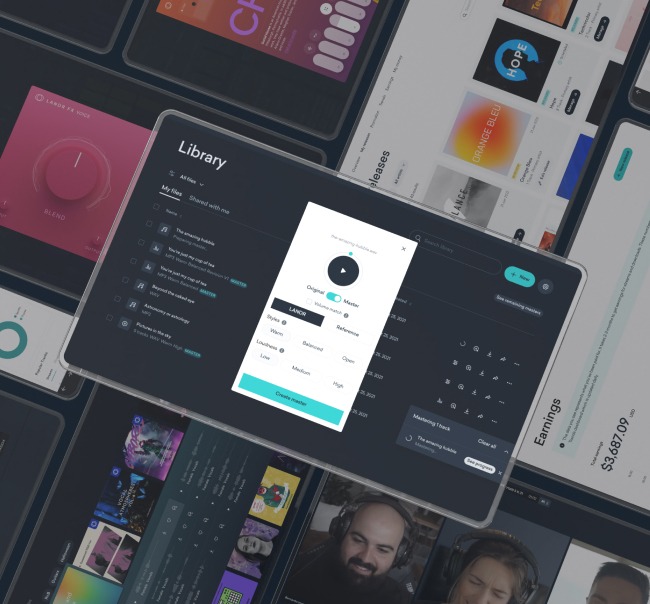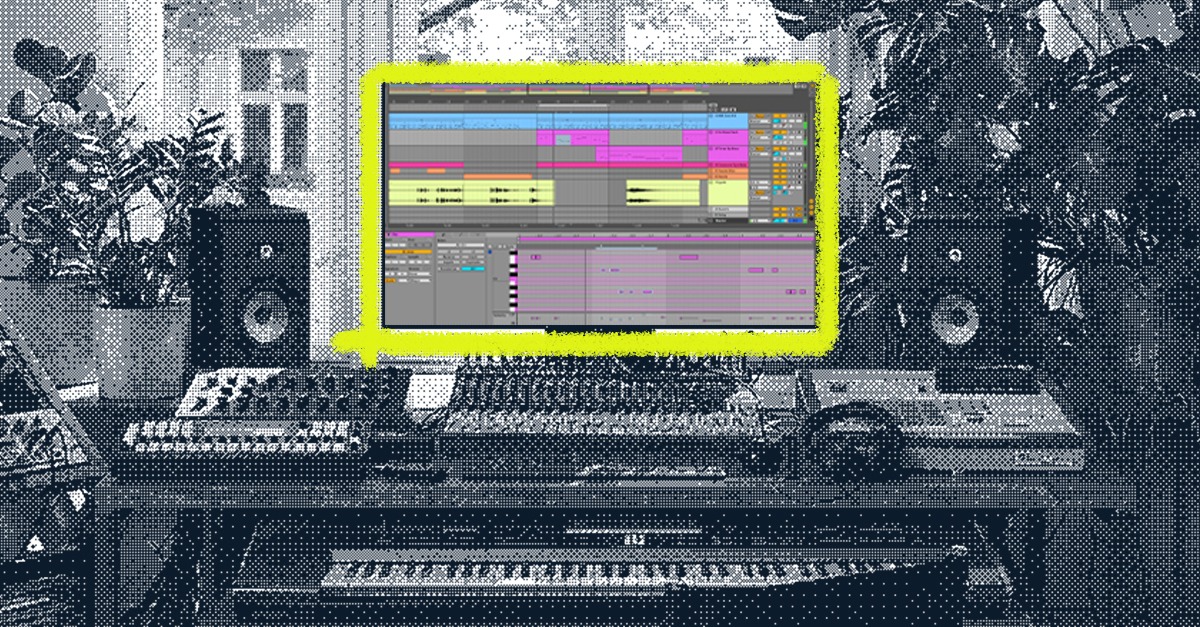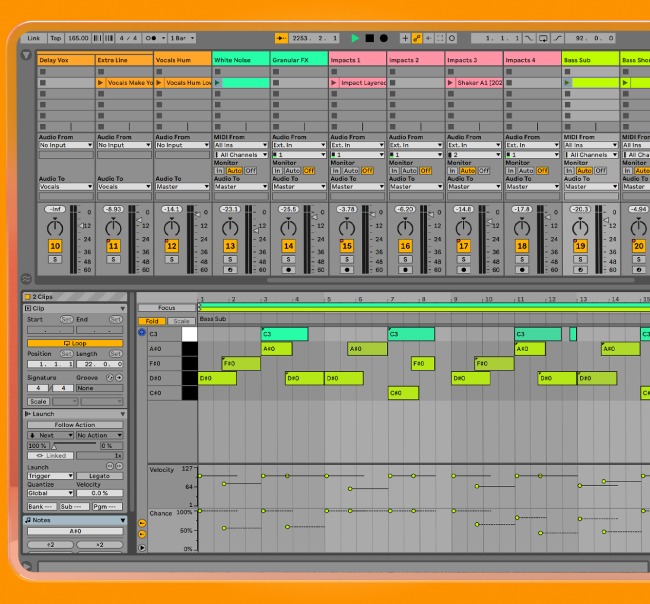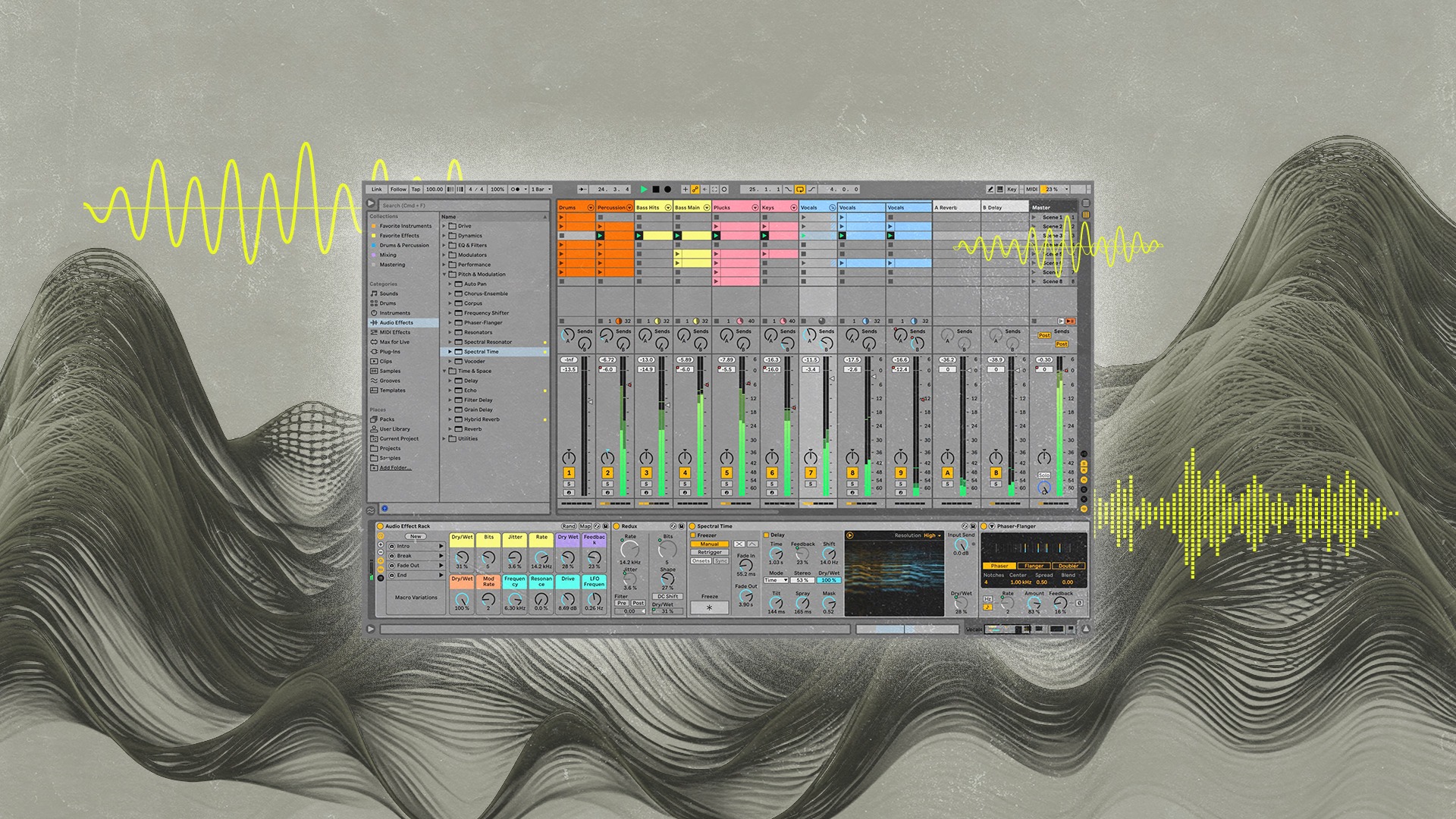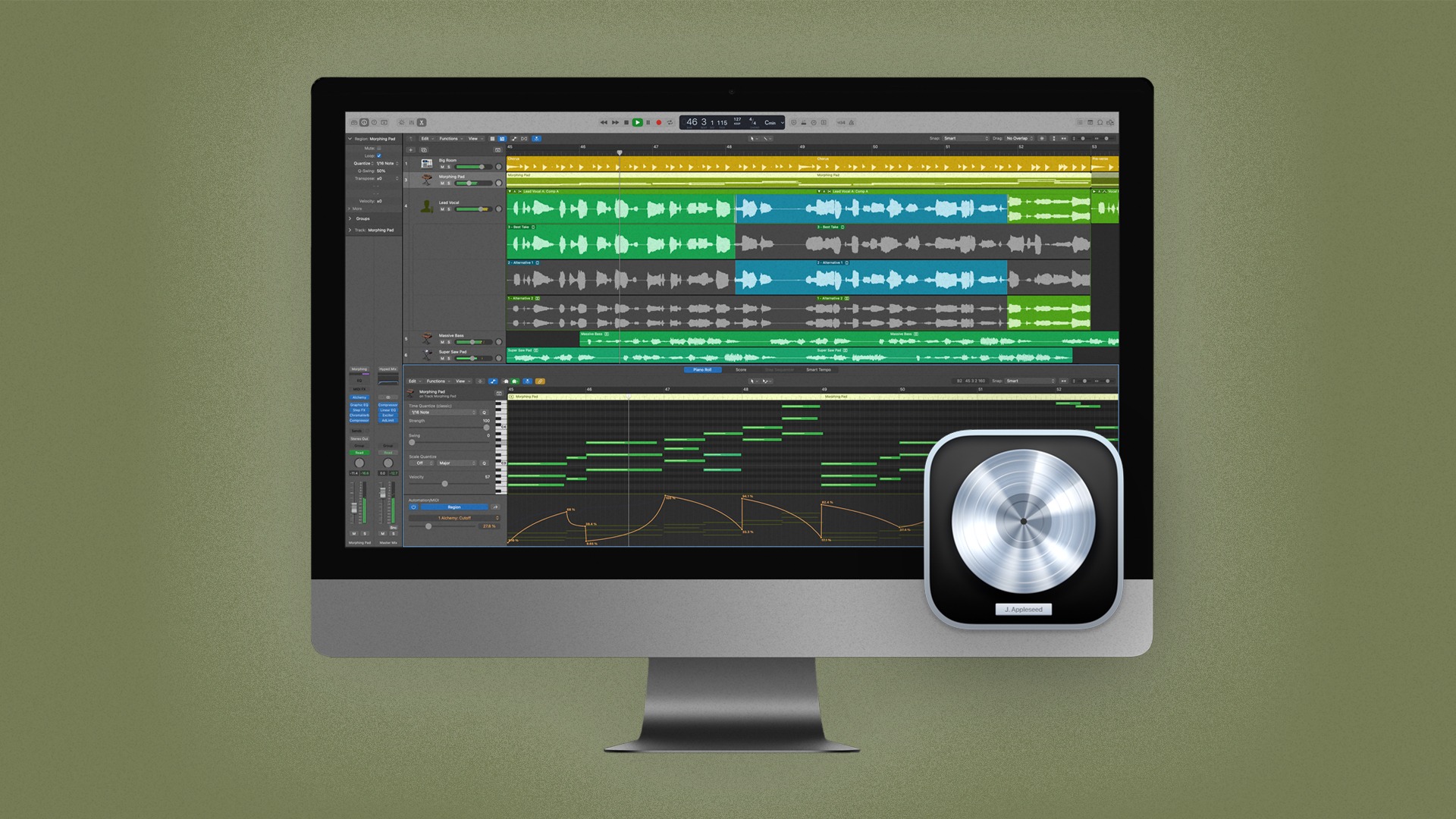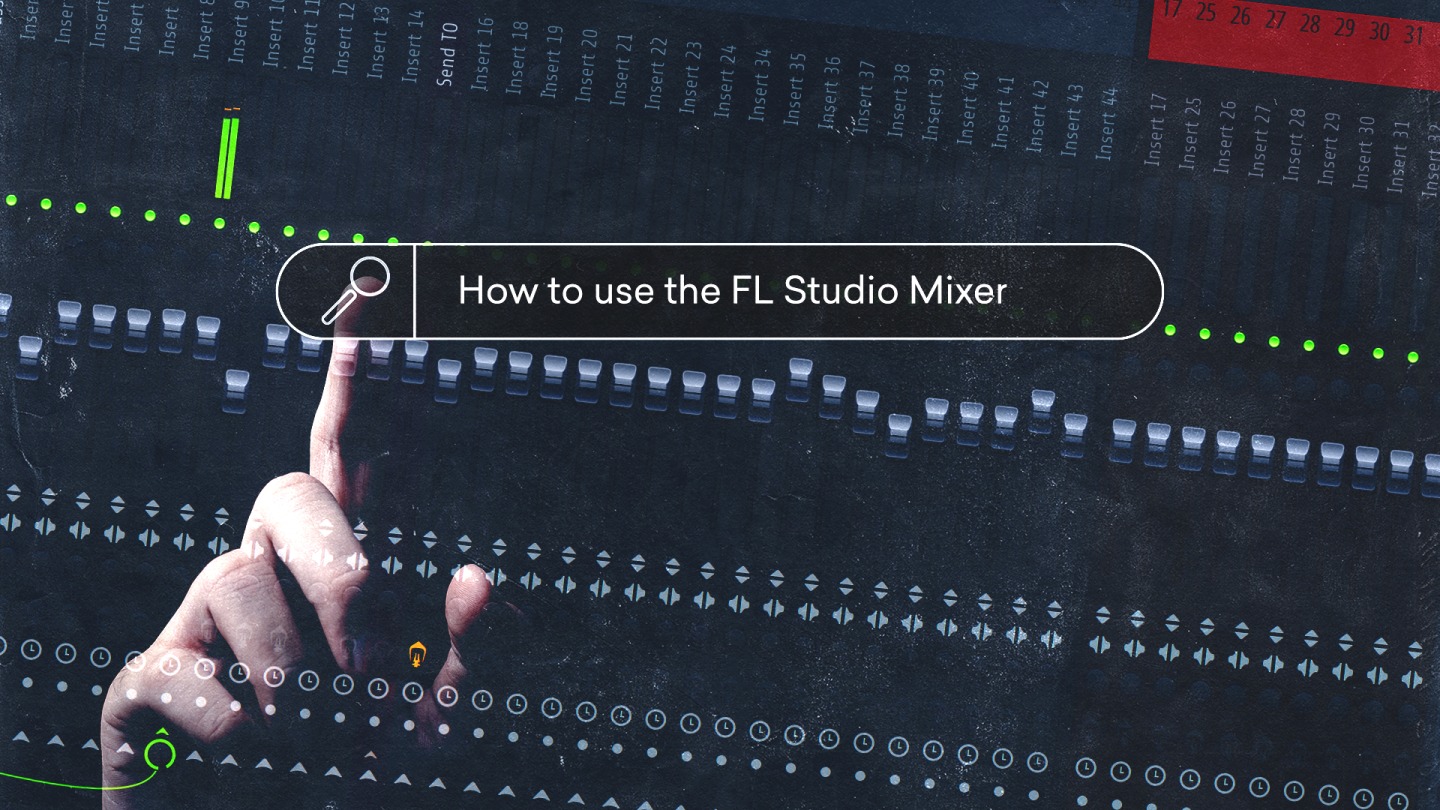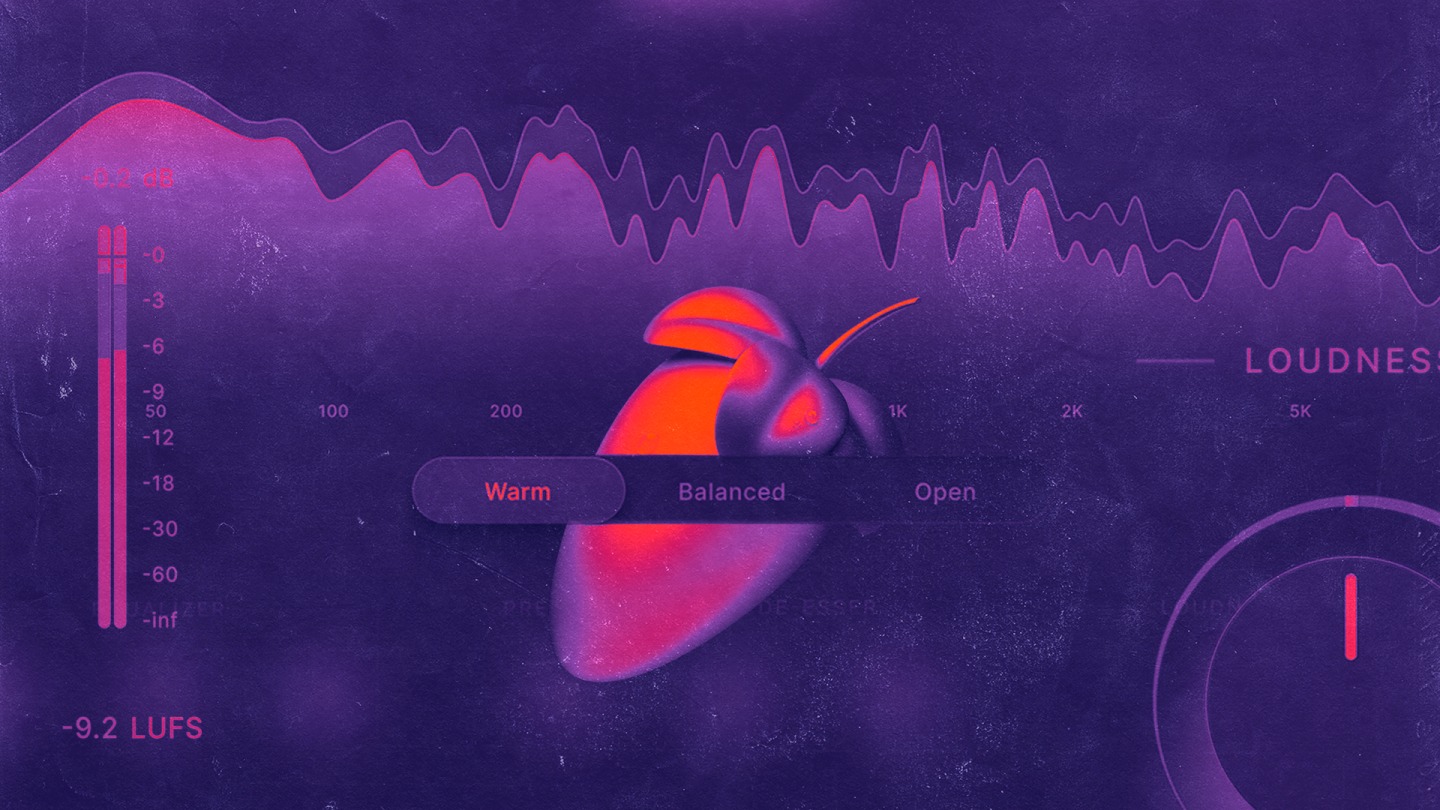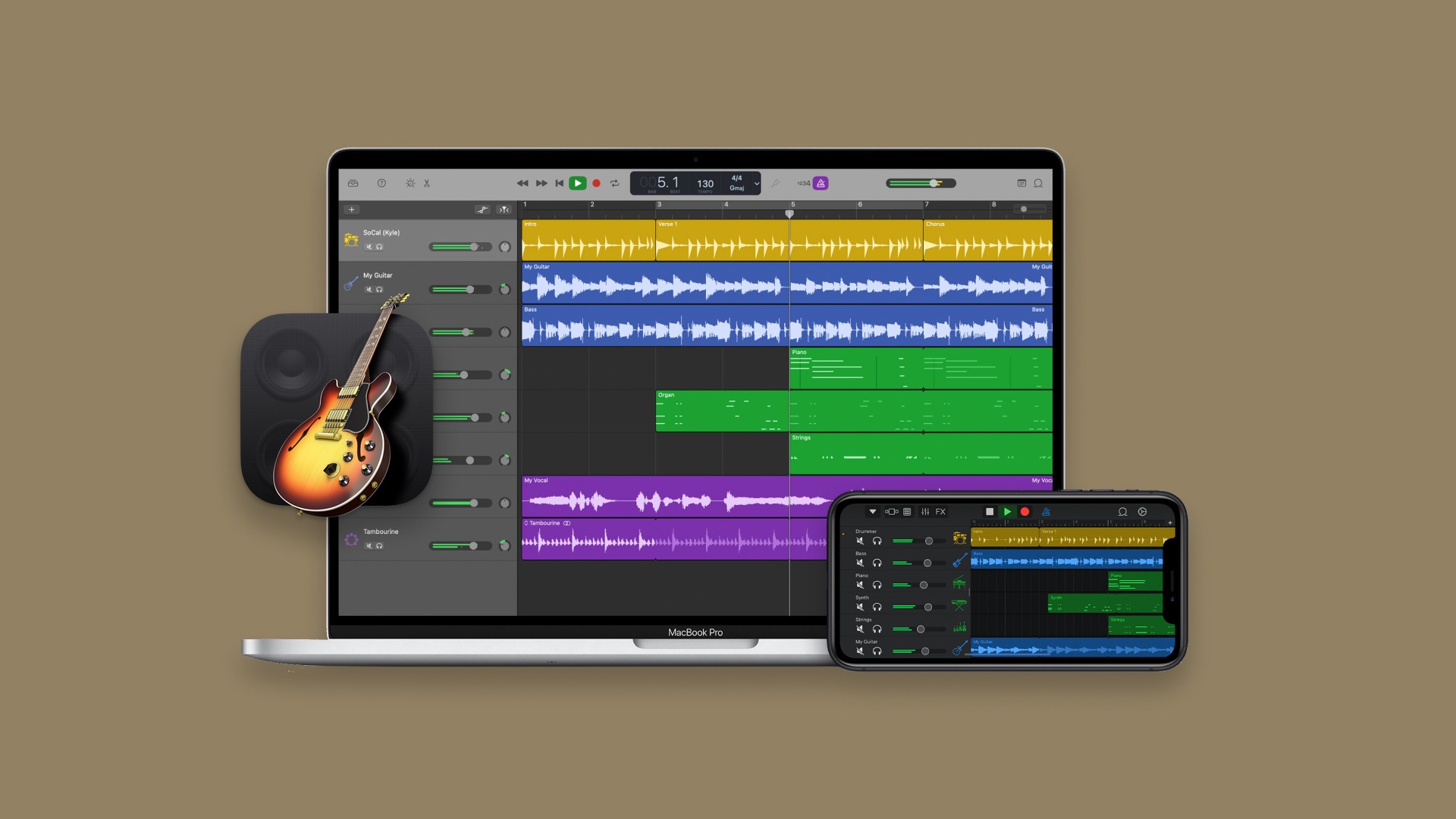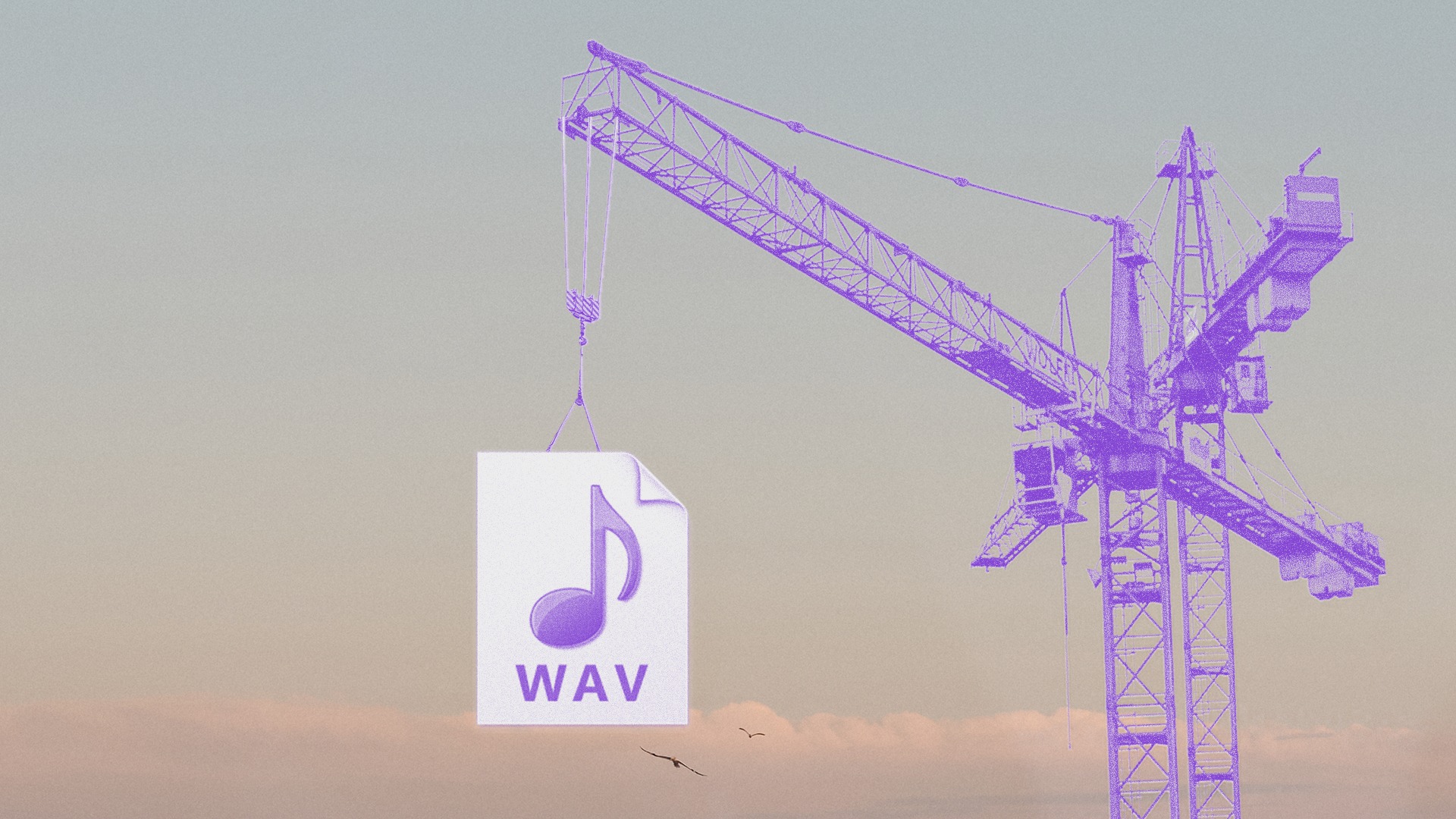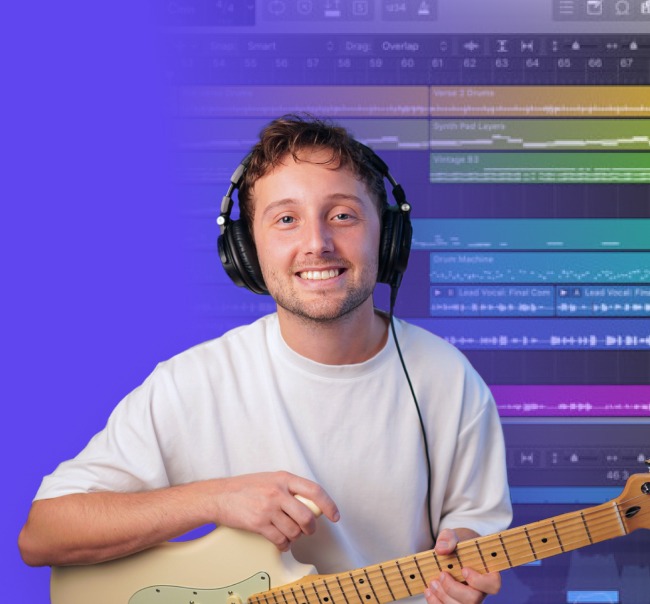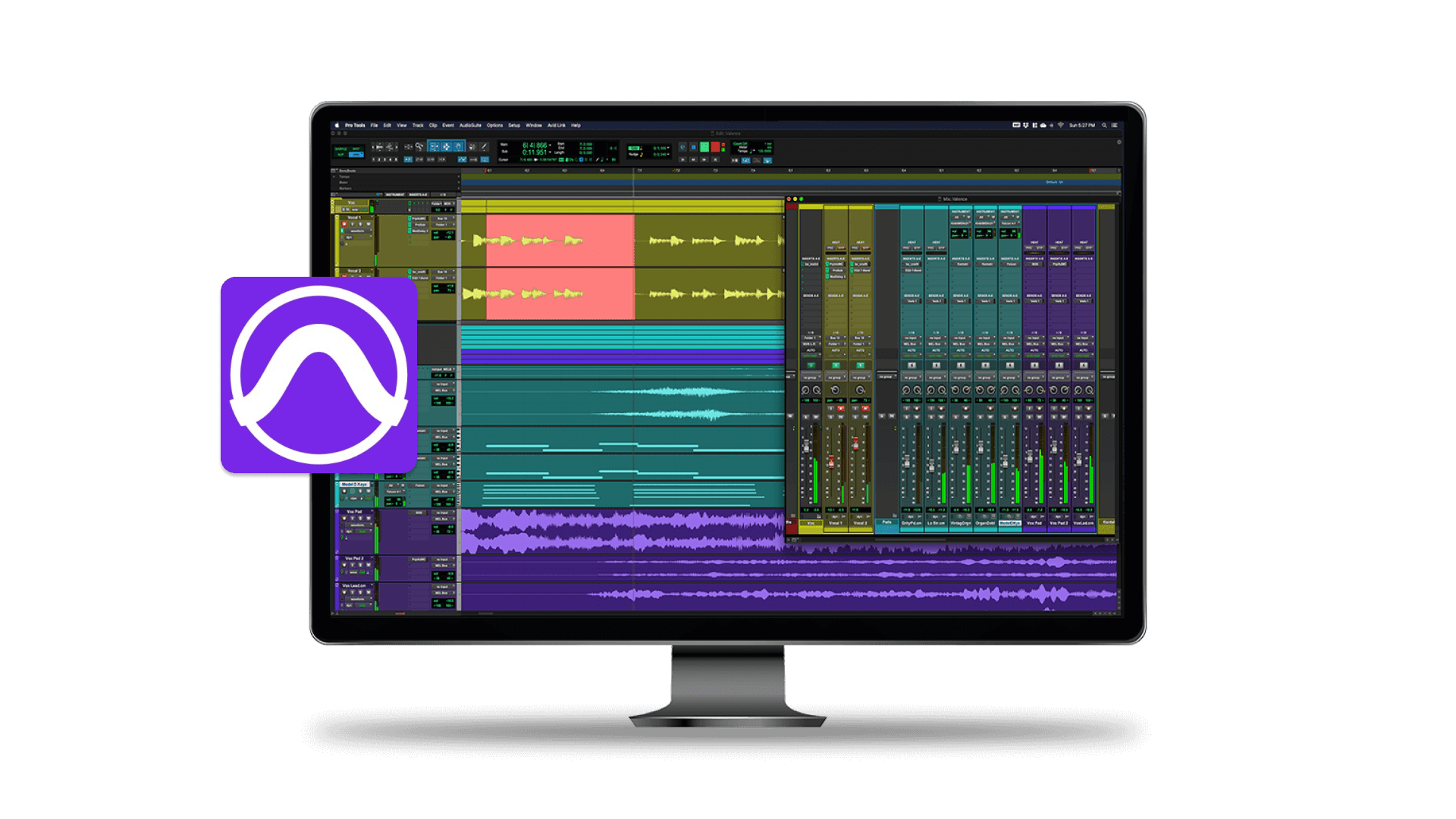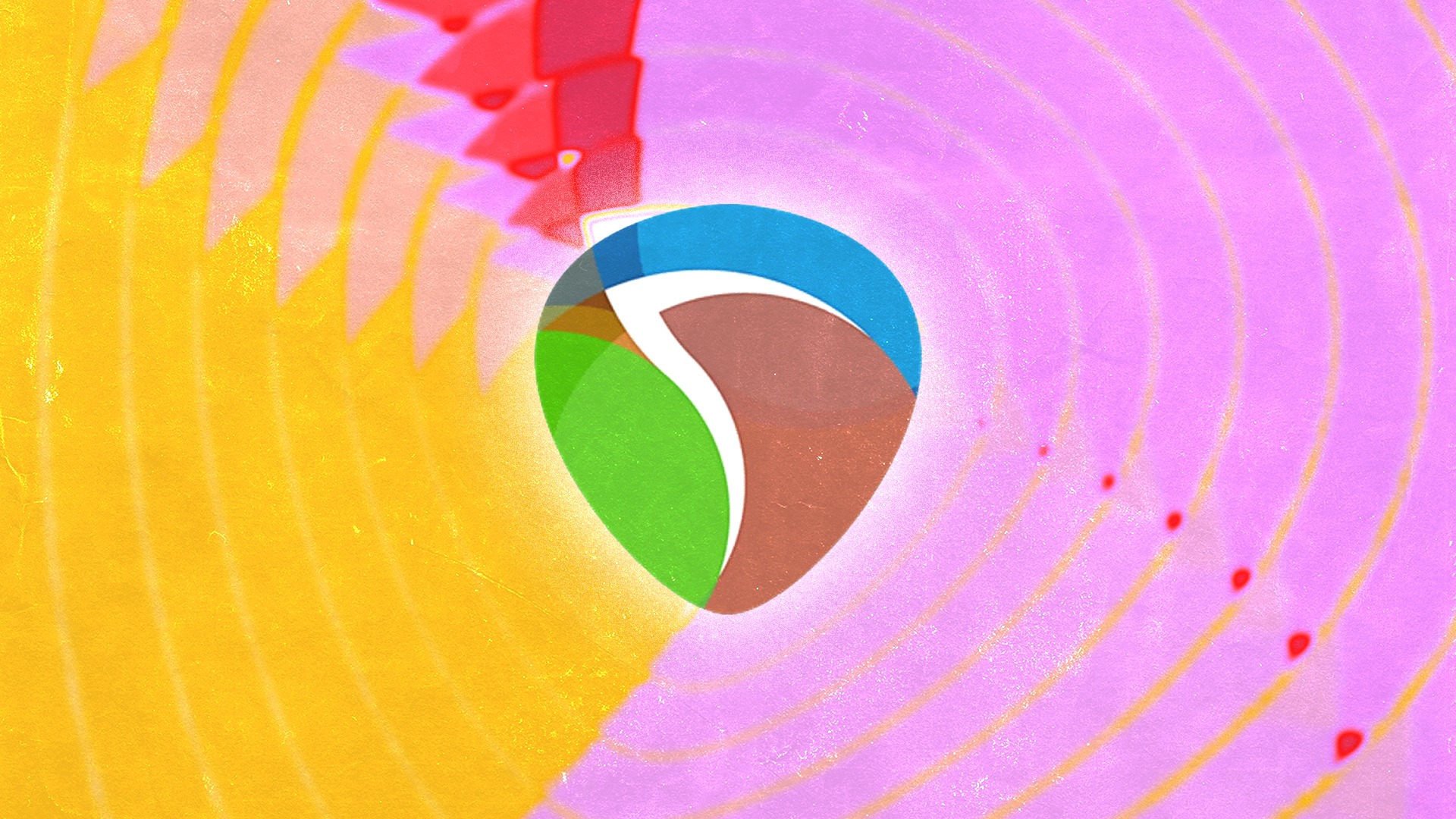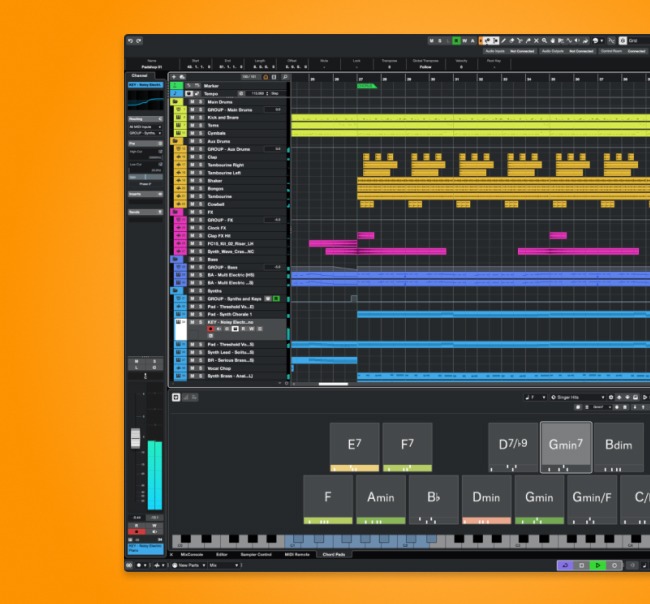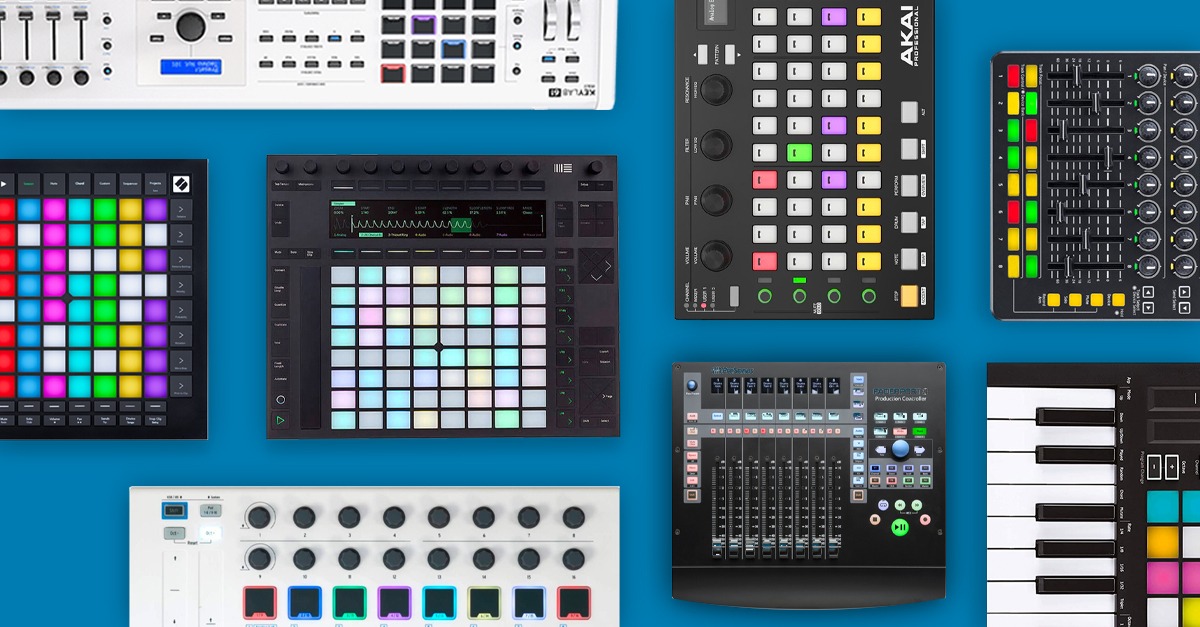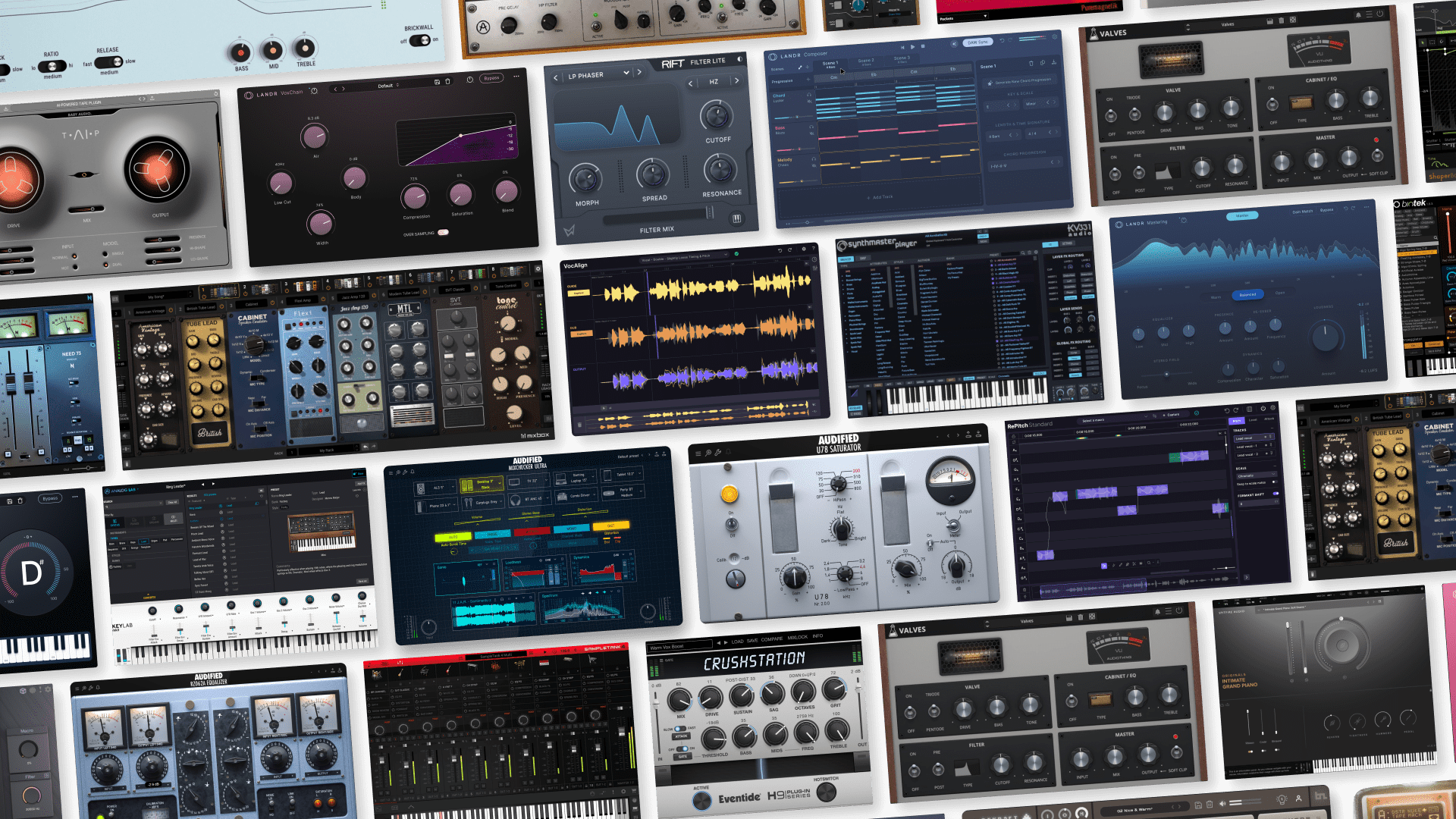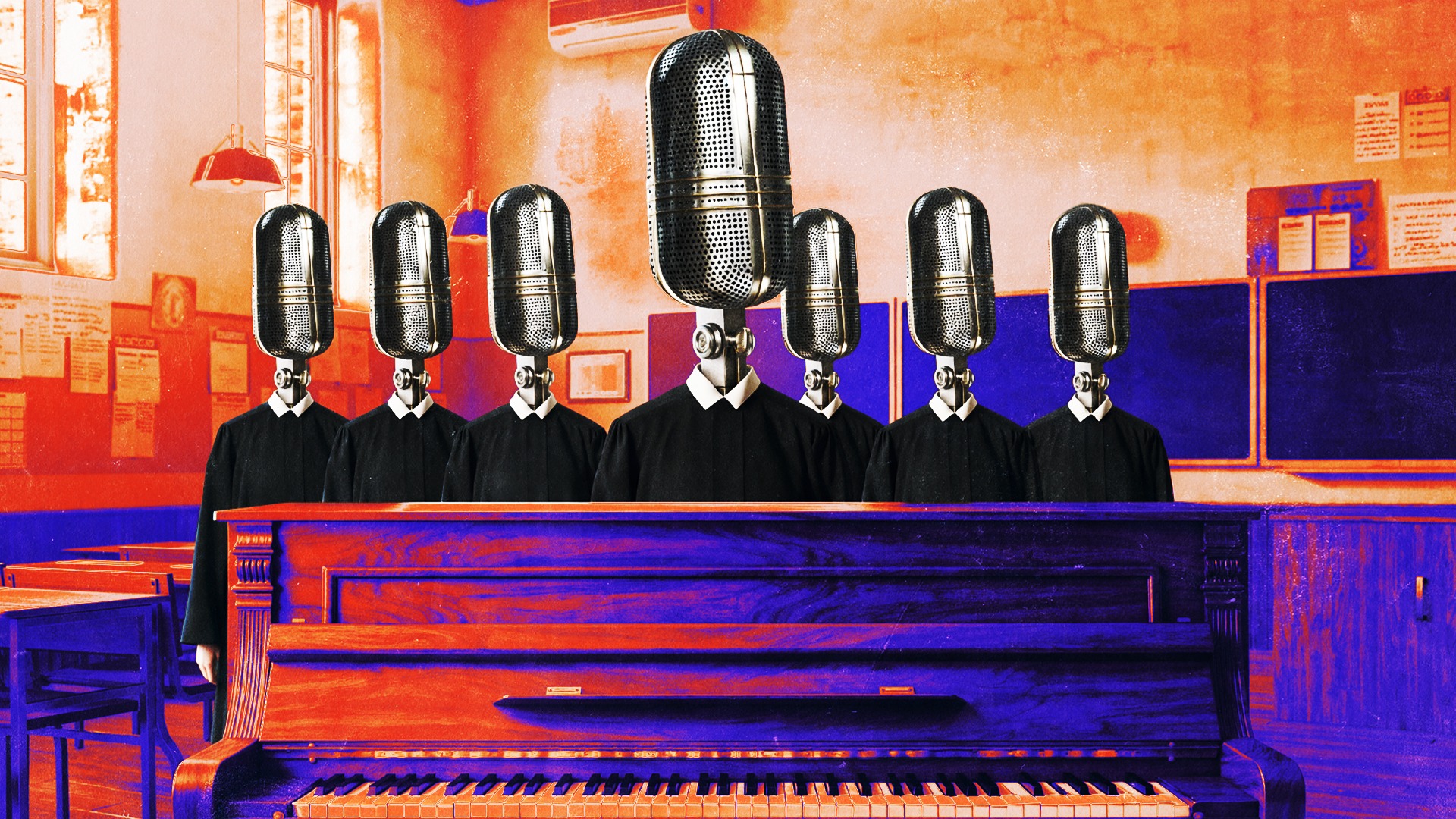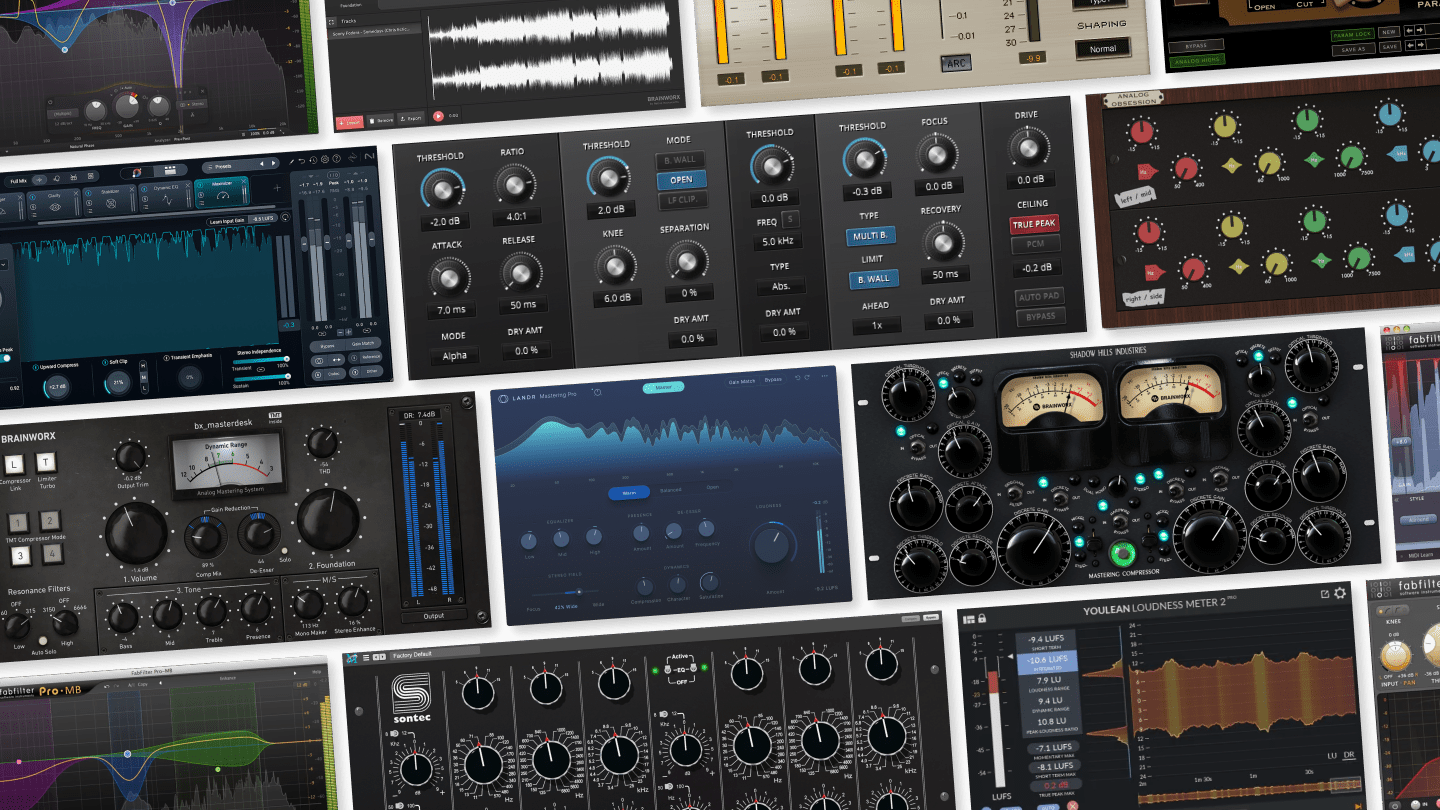
The 10 Best DAWs (Digital Audio Workstations) for 2025
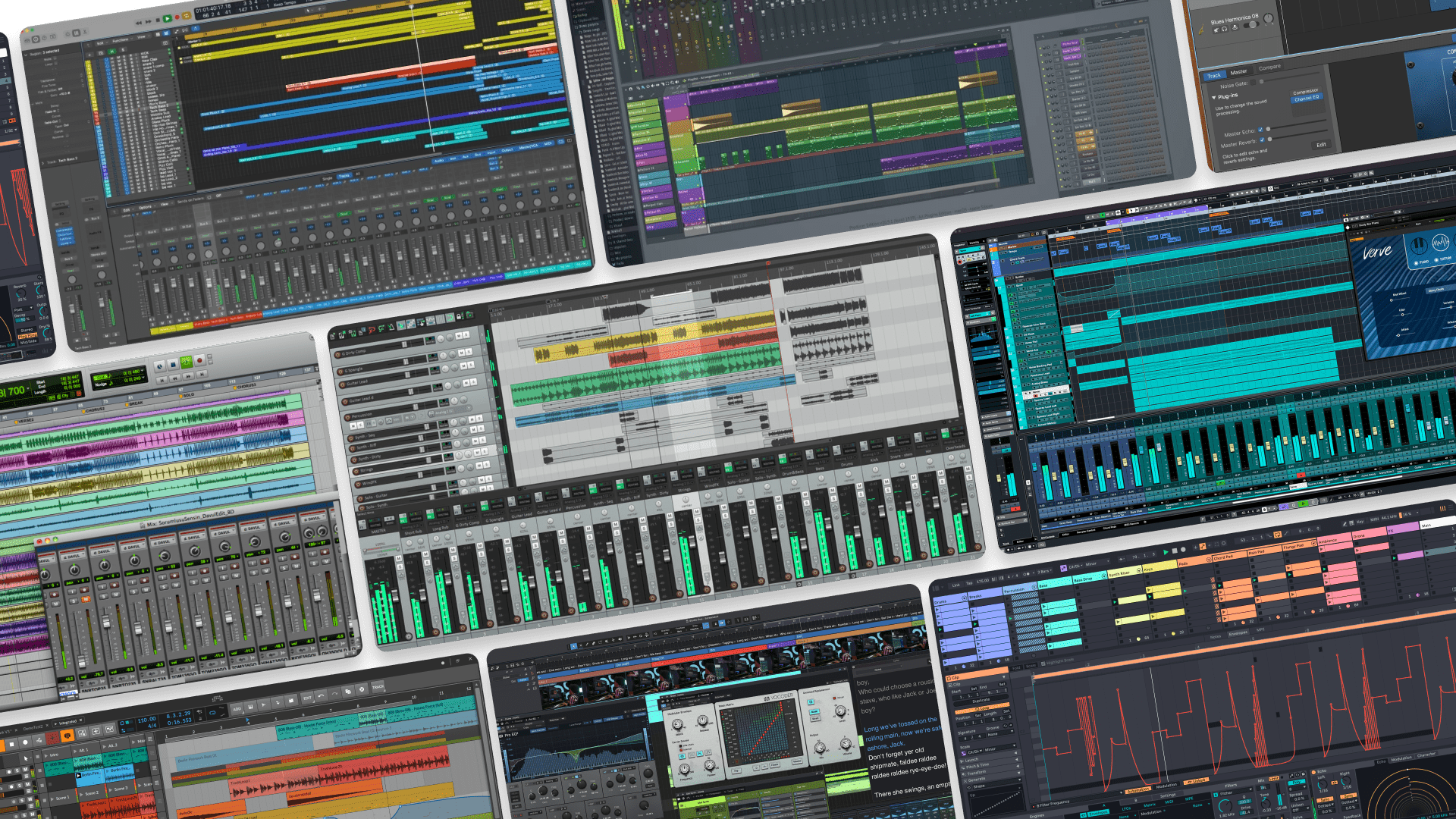
The DAW (short for Digital Audio Workstation) is your starting point if you want to produce music. But finding the best DAW that suits your unique needs as a producer isn’t always easy.
Over the years I’ve enjoyed the opportunity to produce and record music in several DAWs.
From my early forays into GarageBand to experimenting with synths and electronic music in Ableton, recording my band with Logic to recording in pro studios with Pro Tools—every DAW I’ve gotten my hands on has its own unique set of features that I want to unpack in this article.
Throughout our testing and review process, we looked at all the newest DAWs, what their updates offer, ideal use cases, their specifications, workflows, included plugins, learning curve and overall value for price.
So if you’re looking to start making music in a DAW, upgrade from an older version, or you’re curious about what’s new in DAW software, we’re going to go over everything you need to know.
Ready to find the best DAW for you? Let’s dive in.
The 10 Best DAWs on the market right now
Our quick recommendations:
- Best DAW for Live Performance: Ableton Live 12
- Best All-Around DAW: Logic Pro
- Best DAW for Beat Makers: FL Studio
- Best DAW for Beginners: GarageBand
- Best DAW for Studio Recording: Pro-Tools
- Best Budget DAW: Reaper
- Best DAW for MIDI Composition: Cubase
- Best DAW for Sound Design: BitWig Studio
- Best Hardware Integrations: PreSonus Studio One
- Best Mobile DAW: Logic Pro iOS
1. Best DAW for Live Performance: Ableton Live 12
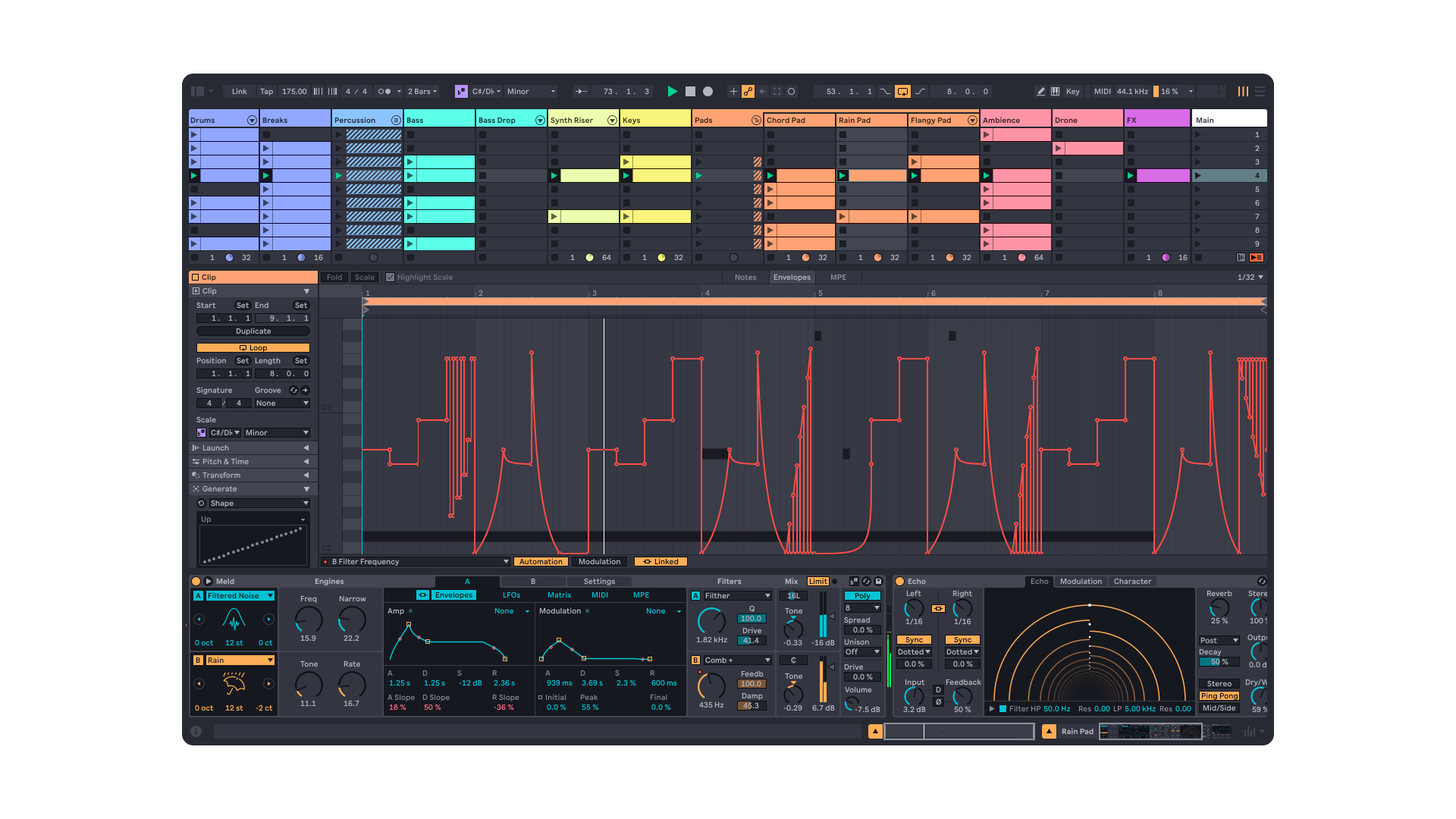
Quick overview of Ableton Live 12
| Operating system: | macOS 11 Big Sur, Windows 11 |
| System requirements: | Intel Core i5 or AMD Ryzen, 8GB RAM, 3GB disk space |
| Key features: | Session view, Ableton Push 3, Max for Live, Racks, Warp, Link |
| Included plugins: | Meld, Granulator III, Roar, Drift and more Ableton plugins |
| Included content: | Up to 71GB of additional samples and loops with Suite |
| Price: | Intro starts at $99, Suite edition is $599 |
Pros:
- Optimized for live performance and flexible creation
- Includes a suite of excellent instrument and effect plugins
- Max for Live opens up the ability to build your own instruments
- Ableton Push 3 offers a powerful hardware control surface
- Huge library of included samples and loops
- Intuitive and powerful workflow that many producers love
Cons:
- Higher price than other DAWs
- Not as well optimized for professional recording studio settings
Why Ableton Live 12 is the best DAW for creativity and live performance
When it first launched in 2001, Ableton’s developers wanted to create a DAW that was built from the ground up for creativity and live performance.
Its now-famous session view freed up digital audio production from the typical timeline workflow and enabled creators to audition and cycle through different combinations of sounds easily.
The DAW is accompanied by Ableton Link, an open-source technology that allows producers and performers to tempo-synchronize instances of Live (and other software tools) across multiple devices via a wireless network.
And of course, Ableton’s Push 3 controller is well integrated into Ableton Live, turning the DAW into an intuitive, tactile instrument that can even be used stand-alone.
Why choose Ableton Live?
This is a great choice if you want an inspiring and intuitive music production suite that’s built with creatives in mind.
With session view, Max for Live and its suite of instrument plugins, Live 12 is great for sound design and music creation, especially if you produce electronic music, pop music, hip-hop or beats.
Its main drawback is that it’s not well-optimized for large-scale professional studio setups that require complex mic’ing.
It also receives criticism for its non-traditional interface that sometimes prioritizes creative tasks over mixing workflows.
But when it comes to creative applications and performance-centric features, this is one of the best DAWs in its category.
What is new in Ableton Live 12?
- Meld: A multitimbral, multi-engine polysynth
- Granulator III: A sophisticated granular synthesis engine
- Roar: A unique saturation and distortion effect
- Generative MIDI tools and improved MIDI editing
- A full mixer panel in arrangement view
2. Best All-Around DAW: Logic Pro
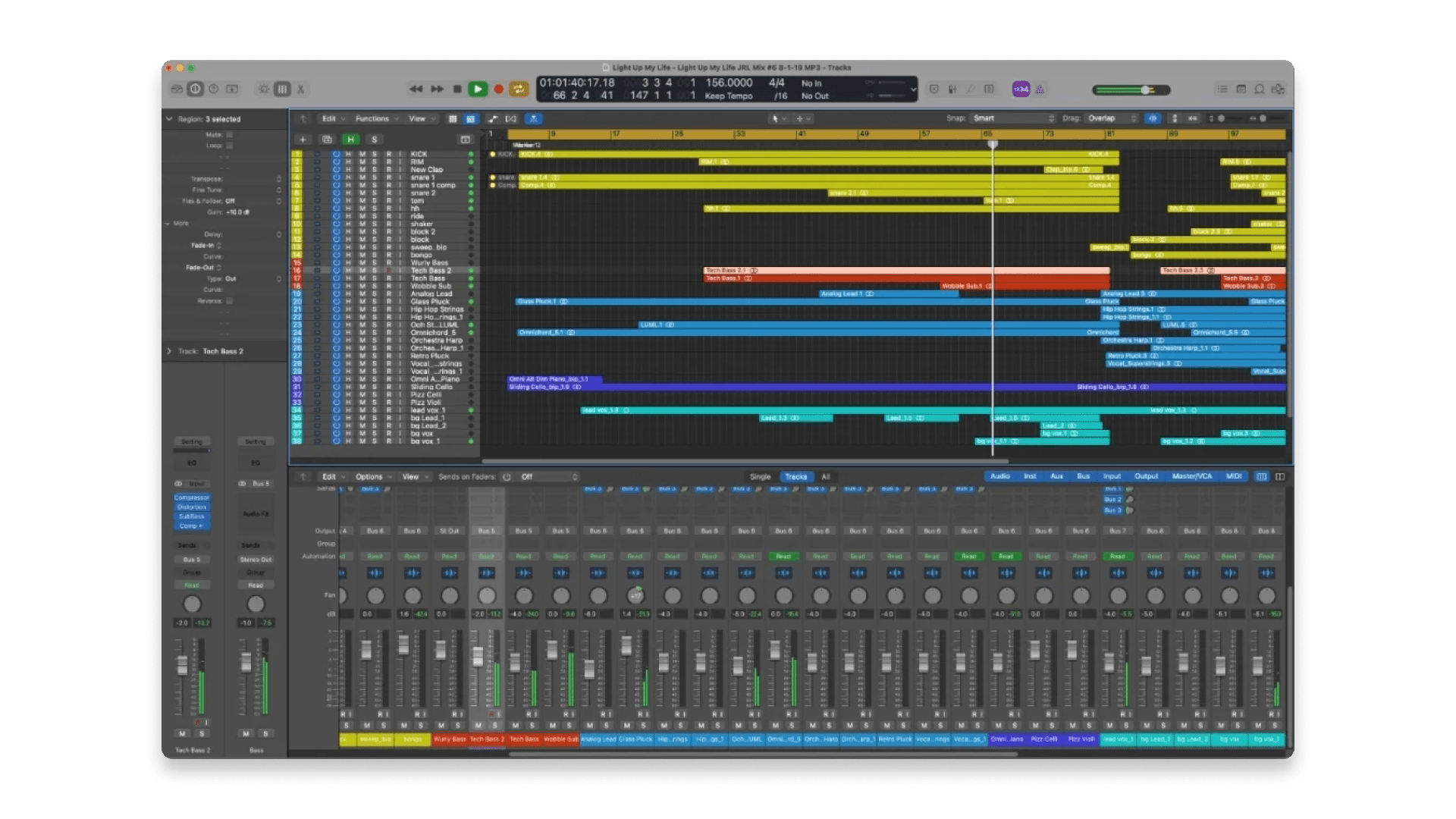
Quick overview of Logic Pro
| Operating system: | macOS Ventura 13.5 or later |
| System requirements: | Minimum 6GB of available storage space |
| Key features: | Mastering Assistant, spatial audio tools, Smart Tempo & Drummer |
| Included plugins: | Beat Breaker, Sample Alchemy, Mastering Assistant and more |
| Included content: | 72 GB library, samples by Tom Misch, Boys Noize and others |
| Price: | $199 |
Pros:
- Same design philosophy as its lighter, free cousin GarageBand
- Competitive creative features including a new live looping view
- Drummer and Smart Tempo
- A deep suite of included plugins
- Huge sound library
- Well-optimized for complex mixes and recording setups
- Fair price
Cons:
- Only available for macOS users
- Mastering Assistant offers less control than other AI mastering plugins
- Not as well optimized for live performance
Why is Logic Pro the best all-around DAW?
Since Logic Pro was acquired by Apple in 2002, the Mac-only DAW has quickly become a go-to among producers in Apple’s creative-friendly ecosystem.
Over the years, Apple developed Logic Pro to ensure that in almost every category Logic excels as a tool for both audio engineers and creatives.
Today Logic includes an impressive suite of bundled plugins that offer artists everything they need to create, mix and master tracks.
Its sound library and instrument plugins offer a wide selection of synths, drum machines and samples, making Logic Pro a creativity powerhouse—especially with its relatively new live looping feature that rivals Ableton’s session view.
In recording studio settings, Logic’s classic channel strip layout, smart comping and track grouping make recording even the most complex rooms and mic’ing setups simple and efficient.
For post-production, Logic’s effects, mixing plugins, clean automation tools and intuitive layout make it a comfortable DAW for mixing.
Overall this is a DAW that’ll handle the needs of most producers, mixing engineers and music makers.
Why choose Logic?
If you’re a macOS user and you enjoyed using GarageBand, Logic is a great option when you’re ready to graduate to a professional music production software suite.
Of course, its most obvious drawback is that it’s only available to macOS users. If you or your collaborators don’t use macOS, Logic will present quite a few hurdles.
But we can’t find a more competitively priced DAW, especially considering its powerful songwriting tools, generous suite of included plugins and overall workflow.
Quote format: If I were to buy a DAW today, Logic Pro would be at the top of my list.
What is new in Logic Pro?
- Sample Alchemy:A new sample-based granular synthesis plugin
- Beat Breaker: A time-shifting plugin that slices and effects loops
- An AI mastering assistant that can produce a rough master
- 32-bit recording capability
3. Best DAW for Beat Makers: FL Studio
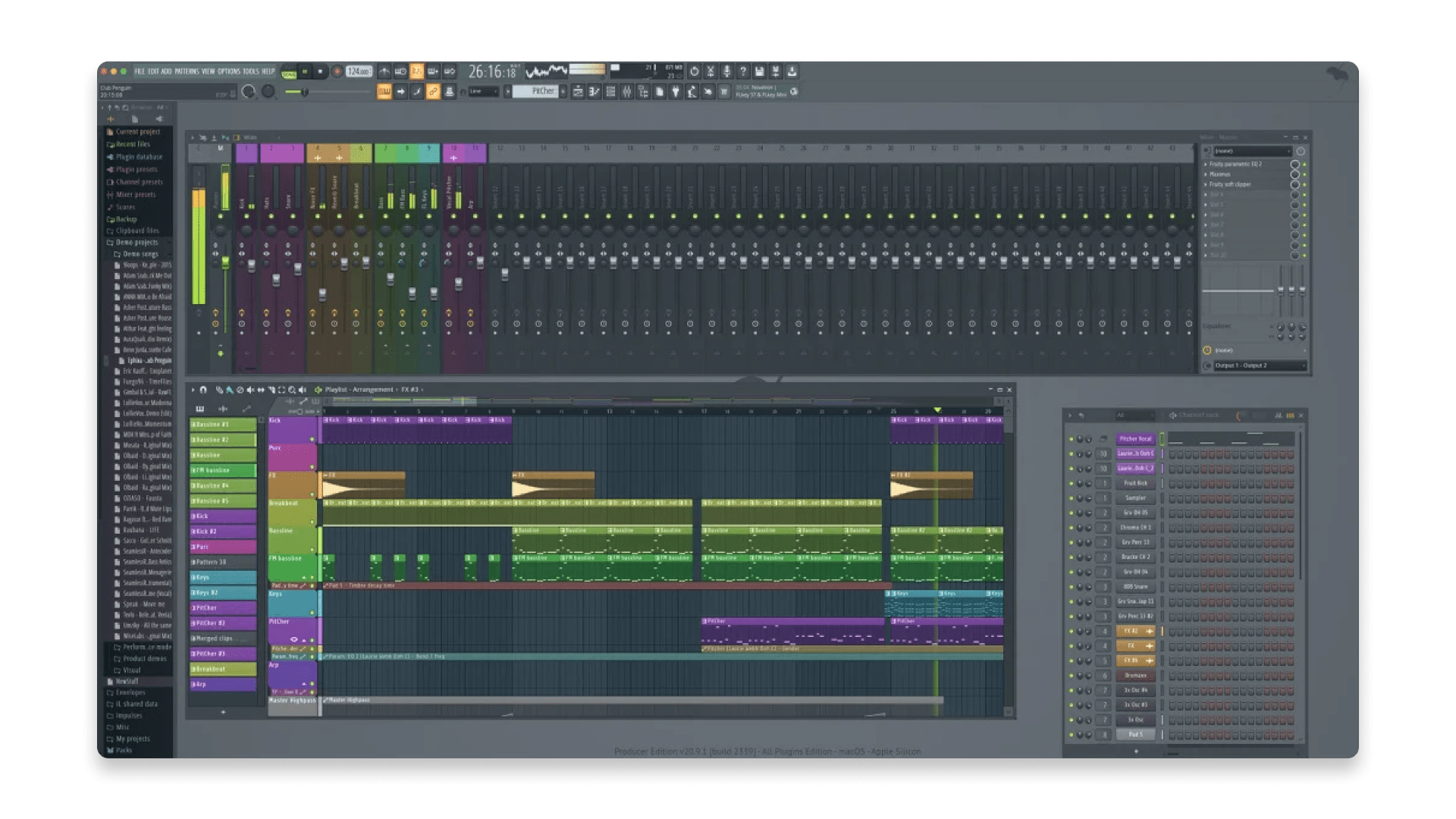
Quick overview of FL Studio
| Operating system: | macOS, Windows 11 |
| Key features: | Unique beat making workflow, unlimited updates, FL Cloud |
| Included plugins: | Up to 115 instruments, effects and tools including Gross Beat |
| Included content: | Access to a massive sample library with FL Cloud subscription |
| Price: | $199 to $599 depending on edition |
Pros:
- Unique workflow that lends itself well to beat making and electronic music
- Comes with a huge collection of instruments, effects and utility plugins
- Free lifetime updates
Cons:
- Compared to other DAWs, its workflow can be complex
- On the pricier end compared to other DAWs
- FL Cloud has good content and distribution but requires an added subscription
Why is FL Studio for beat makers?
In 1998, Image Line launched its original FruityLoops MIDI drum machine, an early version of what would ultimately become FL Studio.
Since launch, Image Line has kept with its MIDI-first focus, creating what is now a well-liked DAW for MIDI sequencing and editing.
Many beat makers gravitate towards FL Studio for its unique workflow that was built around its MIDI drum sequencer and piano roll.
Unlike other DAWs, FL Studio separates the mixer, sequencer and timeline view—the sequencer is found in what FL Studio calls its “channel rack”, which hosts samples and sends loops through the mixer to the DAW’s timeline.
Inside the channel rack, FL Studio features a great drum sequencer and piano roll that provides flexible sample sound design tools and an intuitive way of visualizing rhythms and chords.
Why choose FL Studio?
If you need a creativity-focused DAW and you’re comfortable with its unique workflow, FL Studio makes for a solid choice.
But while most DAWs use a similar timeline and mixer workflow, FL Studio has a very different way of organizing itself.
Some of the habits you may have from using DAWs like Ableton Live or GarageBand won’t necessarily translate over to FL Studio.
So if you’re just getting started with music production, you might be better served by choosing a DAW with a more mainstream workflow.
But if you’re inspired by FL Studio’s unique composition tools, investing in a license and learning this DAW is certainly worth it, especially because purchasing one license gives you permanent access to every future update released by Image Line.
4. Best DAW for Beginners: GarageBand
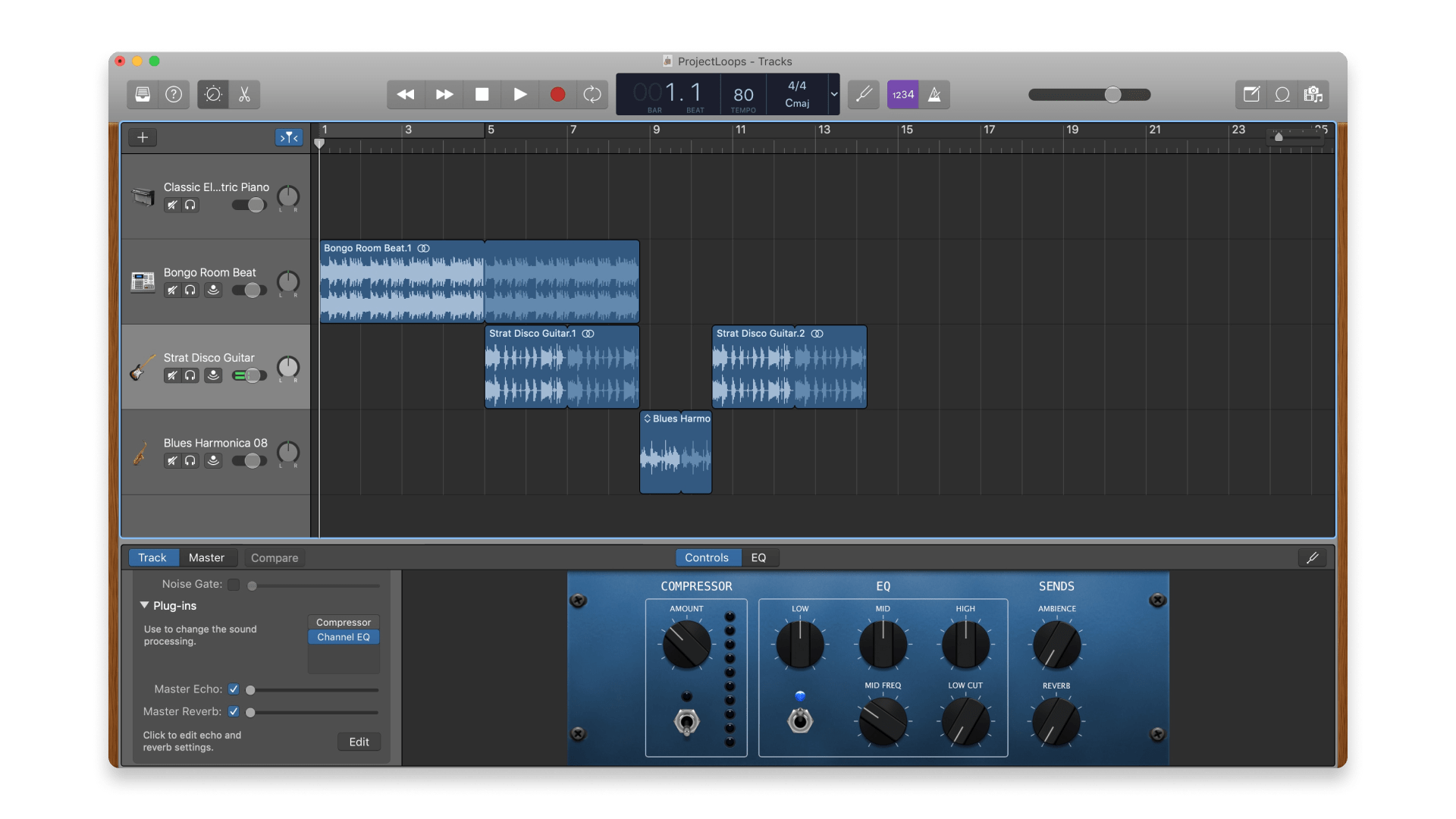
Quick overview of GarageBand
| Operating system: | macOS Monterrey or higher |
| System requirements: | Intel Core i5 or AMD Ryzen, 8GB RAM, 3GB disk space |
| Key features: | Free and included with all Macs |
| Included plugins: | Synth and instrument plugins, 100+ synth presets |
| Included content: | Limited sound library, AI Drummer tool, iOS app |
| Price: | Free |
Pros:
- Free and already installed on all Apple products
- Capable for basic recording and mixing tasks considering its price
- Includes educational content for learning music basics
Cons:
- Limited suite of included effects and plugins
- Not well built for complex mixing and recording tasks
- Limited to 32 tracks
- Only available for macOS and iOS users
Why GarageBand is good for beginners
If it doesn’t inspire you that every Apple user has GarageBand pre-installed for free on their computer or iPhone, it should.
Sure it’s not as sophisticated as other DAWs on this list, but it meets beginners where they are in many ways.
You won’t get the advanced mixing plugins, EQs, compressors and effects that you need to finish a track.
What you do get is everything you need to start writing music in a simple-to-understand interface with tons of instruments, and even a smart drummer that jams with you in real time.
You can easily record external audio sources with the necessary recording hardware—an audio interface, mic or instrument—and the DAW will automatically recognize it and help you set up recording tracks.
Considering that the DAW is preparing you to eventually graduate to its more professional and advanced cousin Logic Pro, GarageBand serves as a perfect starting point that’ll take you a fairly long way before you invest in more advanced software.
Why choose GarageBand?
If you have a limited budget, you’re an Apple user and you’re just getting started with music making, give GarageBand a try!
If you’re reading this on an Apple product, you already have a DAW that will get you started.
There’s nothing wrong with writing and producing your first tunes and experimenting with sounds in the free DAW.
So if you’re just getting into music-making and want to save your budget for hardware (like a mic, audio interface or MIDI controller), GarageBand will do everything you need to get started.
5. Best DAW for Professional Recording Studios: Pro Tools
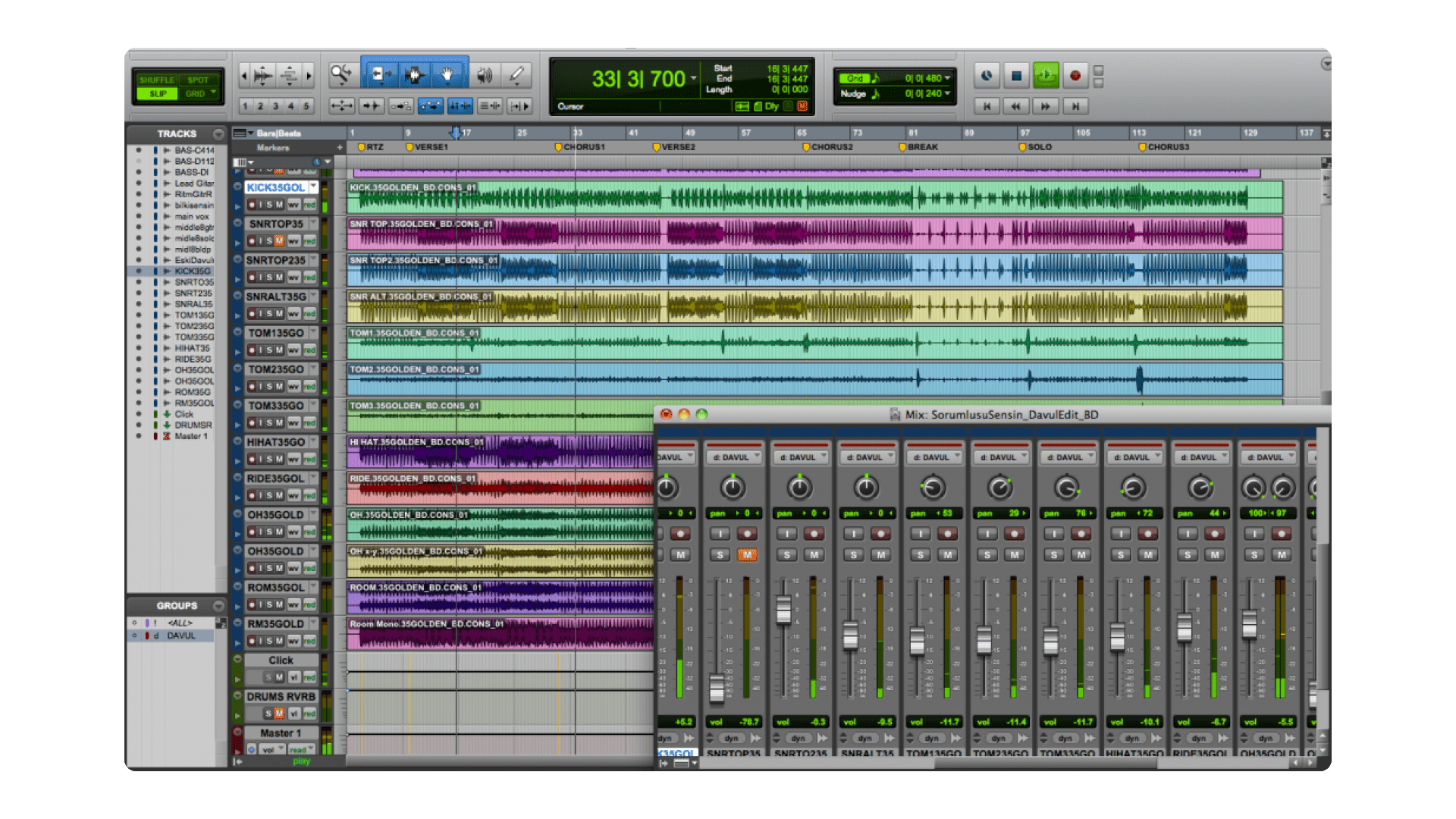
Quick overview of Pro Tools
| Operating system: | Mac, Windows |
| System requirements: | Mac (M2, M1, or dual i5), Windows (i3 2GHz or faster) |
| Key features: | Recording-centric workflow, ARA integration, Dolby Mixing |
| Included plugins: | Over 120 plugins for mixing, mastering and recording |
| Included content: | Monthly samples, loops and presets included with subscription |
| Price: | Up to $789 per year |
Pros:
- The industry standard in professional recording studios
- Optimized recording workflow
- Compatible with advanced studio hardware
- ARA support for powerful real-time processing with tools like Melodyne
Cons:
- Expensive subscription and high cost of ownership
Why is Pro Tools the best DAW for professional recording studios?
Avid is the first-mover pioneer in DAW software. Its Pro Tools product became the gold standard in professional audio circles for its ability to handle audio production in studio settings, and because it was the first widely adopted DAW in pro audio.
With its ability to record up to 256 inputs simultaneously, the DAW can handle setups in large rooms, concert halls and film settings.
Since recording with that many inputs requires working with a ton of hardware, Pro Tools is particularly optimized for working with complex mixer arrangements and rack-mounted compressors, EQs and channel strips.
While the DAW has plenty of creative tools built in, it’s more optimized for pro audio engineering tasks like mixing and mastering. That’s why it’s the go-to DAW for many established mixing and mastering engineers.
Why choose Pro Tools?
If you operate a professional recording studio with a large room and complex recording requirements, you should consider getting this DAW.
But aside from its ability to handle complex recording tasks in professional recording studios, a big reason why pro engineers prefer Pro Tools is simply because it’s what everyone else has.
That alone makes it easy to transfer projects from one studio to another. You don’t have to worry about losing anything whenever you open a project on a new console at a different studio.
But if you’re a beginner producer or an artist looking for a DAW that’s affordable and lends itself to creative projects, Pro Tools might not be your best option.
6. Best Budget DAW: Reaper
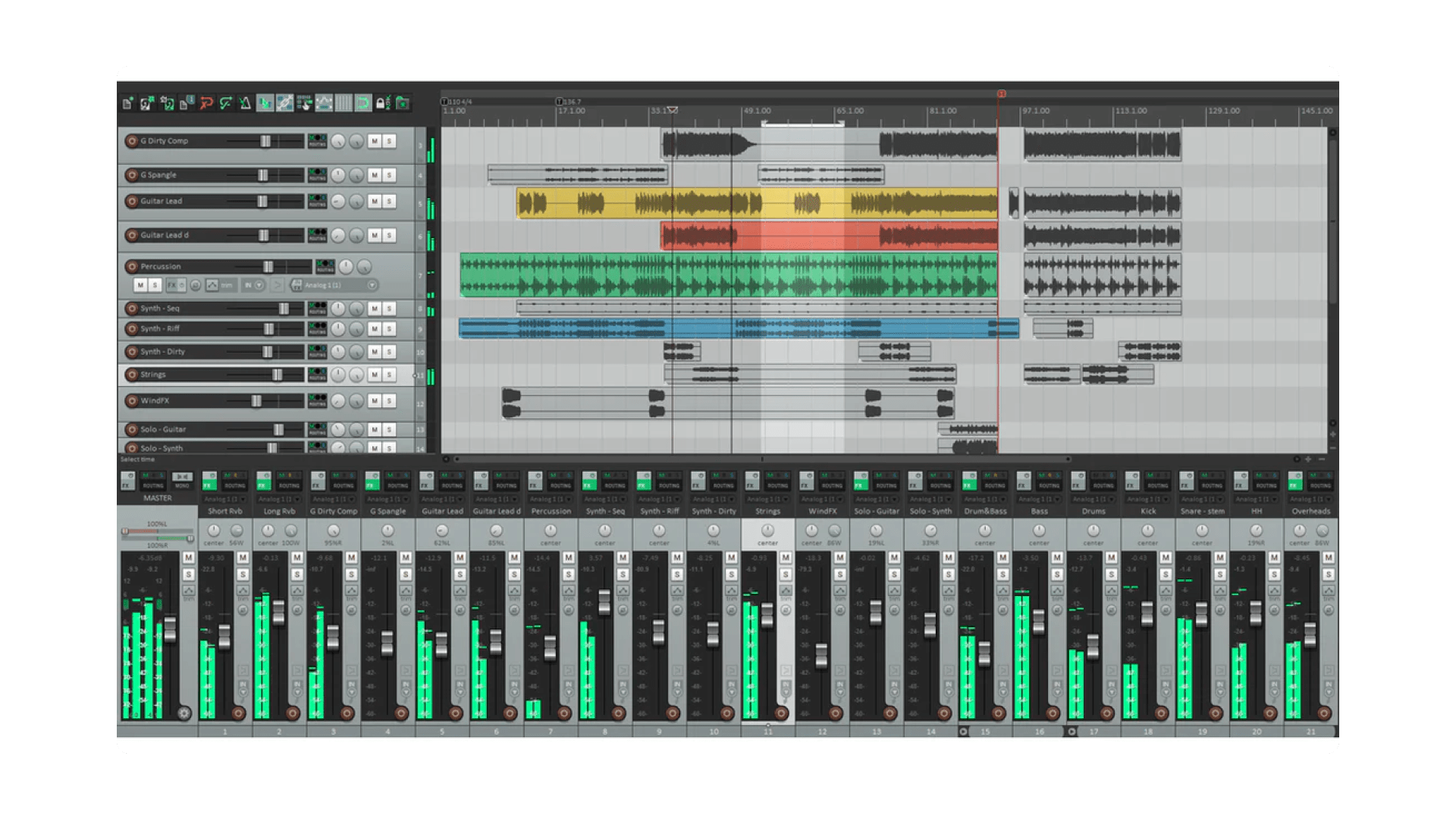
Quick overview of Reaper
| Operating system: | macOS 11 Big Sur, Windows 11, Linux |
| System requirements: | Intel Core i5 or AMD Ryzen, 8GB RAM, 3GB disk space |
| Key features: | Custom code scripting, customizable skins |
| Included plugins: | ReaPlugs suite of effects and utility plugins |
| Included content: | None |
| Price: | $60 |
Pros:
- Ability to customize with code script and skins inspired by other DAWs
- Well-respected workflow for recording, comping and MIDI editing
- One of the most stable DAWs—perfect for large sessions
- Generous trial period and overall low price
Cons:
- The interface can look outdated, even with custom skins
- Very few included plugins or samples
Why is Reaper the best budget DAW?
If you’re looking for a great DAW that can handle even the most complex home studio setup, Reaper is a good option.
Since the DAW permits coders to write custom scripts for it, a community of online enthusiasts has popped up around it. There are various Reddit and Gearspace forums dedicated to the topic and you’ll find tons of skins and add-ons made specifically for it.
Reaper has a great recording workflow and I found its comping system particularly intuitive, making it easy to record multiple takes of certain parts very easily.
Don’t judge Reaper for its somewhat dated look—this is a capable DAW that many artists and professionals love.
Why choose Reaper?
Reaper is a great choice if you’re looking for a professional DAW that can handle studio setups at a very reasonable price—especially if you’re a Windows user.
Reaper’s biggest drawback is the limited number of included plugins it comes with and that it has no included sample library.
So you’ll have to be comfortable with gathering your own plugins, which shouldn’t be difficult considering how many you can get for free or as part of a high-value bundle.
But, if you’re comfortable with its old-school interface, Reaper’s smart workflow and handling of recording make it a great option for home studio producers looking for an inexpensive DAW.
7. Best DAW for MIDI Composition: Cubase
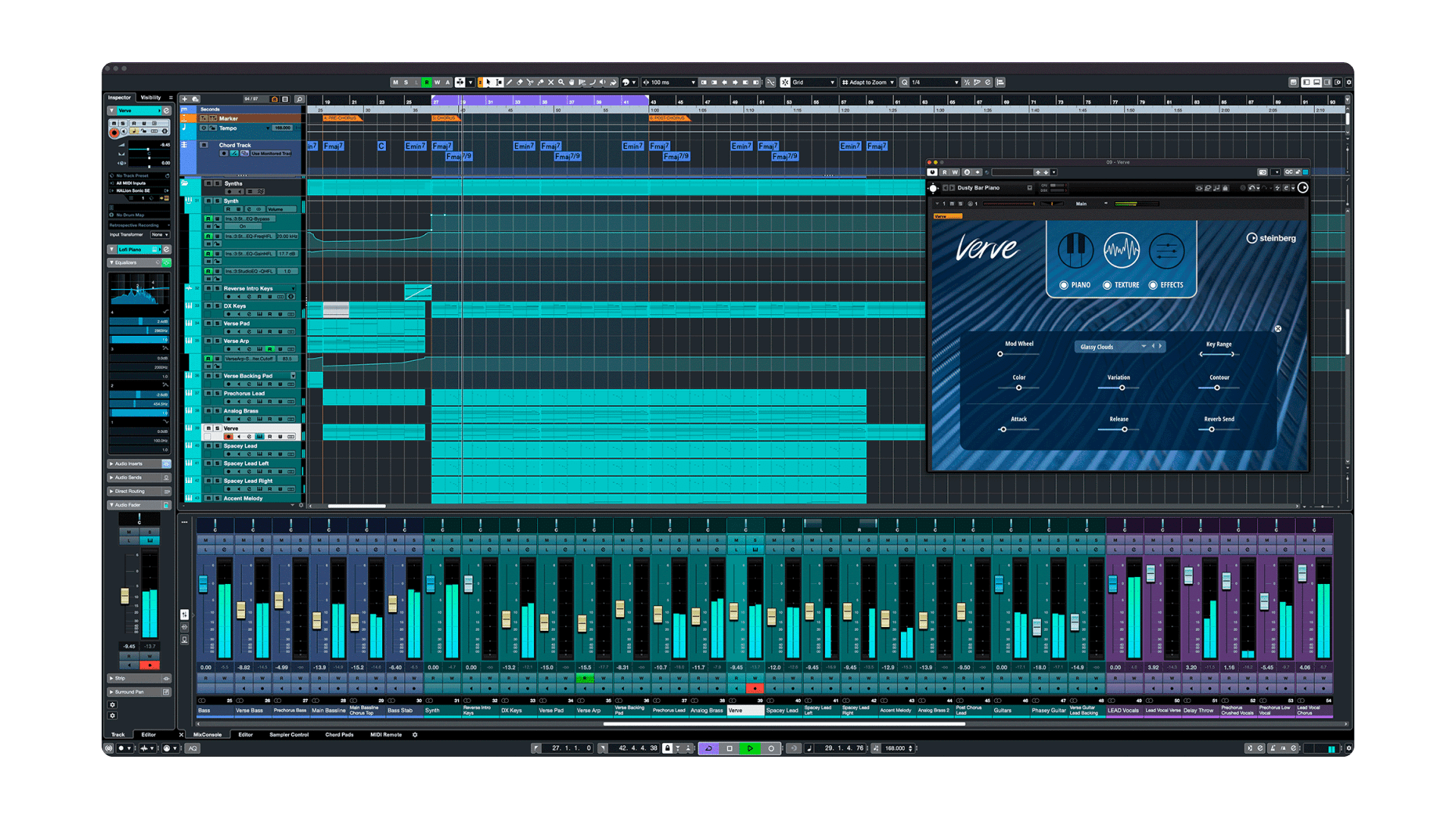
Quick overview of Cubase
| Operating system: | Windows 11, macOS Monterey |
| System requirements: | 8GB RAM, 75GB disk space |
| Key features: | Powerful MIDI editing features, Steinberg hardware integration |
| Included plugins: | 30+ effects, EQs, 6 flagship instrument plugins |
| Included content: | 20+ GB of sounds and loops included with the base edition |
| Price: | Non-sale price starts at $99.99, top edition is $579.99 |
Pros:
- Strong MIDI editing workflow
- Optimized for film scoring and orchestral style composition
- Generalist DAW that focuses on creativity, mixing and recording
- Reportedly more stable with large sound libraries
- Free trial
Cons:
- Doesn’t allow clip-based MIDI editing
- Missing built-in modulation and instrument/effect racks
Why is Cubase the best DAW for composition?
Cubase is a well-rounded DAW that handles all aspects of music production, recording and mixing.
Where the DAW excels more than others is with its MIDI composition tools in orchestral, electronic and sound design contexts.
This is due to its precise control over a ton of MIDI parameters, expression, velocity and more.
The DAW also handles other MIDI-related tasks including audio-to-MIDI recording, transposition and scale mode. It even includes a collection of MIDI effect plugins.
Cubase’s strengths in MIDI are what makes it particularly useful for scoring and orchestral composition since orchestra instrument plugins rely on MIDI for creating expression.
It’s also more stable than others when loading large, CPU-intensive sound library plugins and it handles video tracks very well making Cubase a great choice for film-scoring applications.
Why choose Cubase?
This is a great choice if you’re looking for a creative DAW that can handle pro audio requirements, especially if you plan on producing orchestral compositions.
Overall, we found that the DAW differentiates itself from others by handling MIDI editing and composition better than others, even though it lacked a clip-based view similar to Ableton.
Considering how long Cubase has been in development, it’s no surprise that the DAW is well-rounded and capable in most recording contexts.
Compared to Logic or Ableton Live, we found that Cubase finds itself in a healthy middle ground, offering creative features for compositional, arrangement-based music production while keeping smart workflows for mixing and recording.
So, if you’re a Windows user who wishes Logic wasn’t exclusive to Apple, Cubase is especially worth looking at.
What is new in Cubase 13?
- Improvements to the mixing console’s interface
- New editing capabilities to its piano roll and drum MIDI editors
- A vocal chain plugin with audio processing for vocal production
- New EQ, compression, effects and composition plugins
8. Best DAW for Sound Design: Bitwig Studio

Quick overview of Bitwig Studio
| Operating system: | macOS, Windows and Linux |
| System requirements: | 4GB RAM, 12GB disk space |
| Key features: | Grid sound design workflow, unique modulation system |
| Included plugins: | Suite of instruments and effects including Polymer, EQ+ and others |
| Included content: | 4GB library of loops and samples |
| Price: | Base edition starts a $99.99, the most advanced edition is $399.99 |
Pros:
- Powerful sound design tools in Grid
- Intuitive modulation system that can control hardware and VSTs
- Smart time-stretching, splitting and pitch-correcting tools built into its audio editor
- Reportedly a stable and reliable DAW when handling CPU-intensive tasks
- Free trial
Cons:
- Less optimized for complex recording
- UI can be overwhelming at times
Why is Bitwig the best DAW for sound designers?
Bitwig is a relatively new DAW that was created by a team of former Ableton employees and released in 2014.
Bitwig marginally takes the lead in the sound design category with its intuitive but powerful Grid system. This allows you to build customized synths, effects, EQs and compressors.
The Grid is a modular production environment that offers a selection of modules that a sound designer can use to manipulate a digital audio signal chain.
With its simple presentation of various synthesis and sound design parameters, some might find the Grid easier to learn than other instrument design platforms like Max for Live or Reaktor.
Bitwig also includes several great instrument plugins, offering a selection of synths and effects including its flagship synths Polymer and Phase.
Why choose Bitwig?
While Bitwig caters to the electronic music and sound design crowd, the DAW is still well suited for other aspects of music production.
So if you’re looking for a DAW that emphasizes sound design but offers traditional recording, mixing and songwriting workflows, Bitwig could be for you.
Bitwig’s main drawback is its busy interface, which can be clunky at times.
So, producers who prefer a clean UI and who don’t use software instruments for sound design may want to skip this one.
What is new in Bitwig Studio 5?
- Two formant shifter modules
- Six distortion modules
- Two resonant filter modules
- Optimizations to its mixer view
- Improved quantization, time-stretch and normalization tools
9. Best Hardware Integrations: PreSonus Studio One
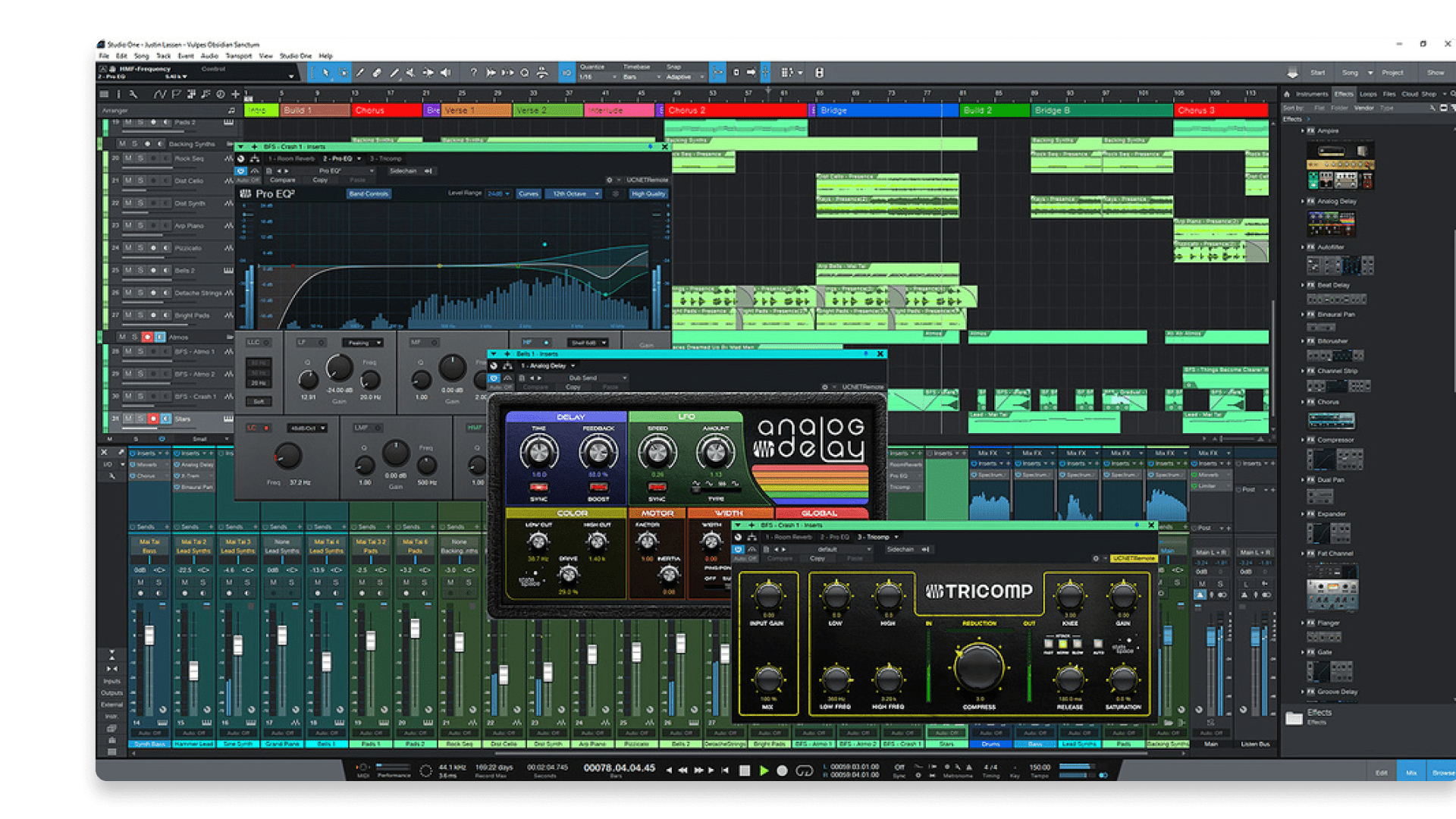
Quick overview of PreSonus Studio One
| Operating system: | macOS 10, Windows 10, Linux |
| System requirements: | Intel Core i3 or better, 8GB RAM, 40GB disk space (full install) |
| Key features: | PreSonus hardware integrations, surround mixing, tutorials |
| Included plugins: | Suite of 30+ effects, Melodyne, 7+ instrument VSTs |
| Included content: | TuneCore distribution, sample library included with subscription |
| Price: | Studio One+ subscription $19.99/mo, Studio One pro $399.99 |
Pros:
- Great integration with PreSonus MIDI controllers and audio interfaces
- Comparable to Pro Tools for a much lower price
- Well suited for home recording setups
- A great all-around DAW
Cons:
- Less emphasis on sound design or creativity
- Subscription requires ongoing payment for full access
Why is Studio One best for hardware integrations?
Studio One is the proprietary DAW of PreSonus, a well-respected recording hardware manufacturer.
While, PreSonus was traditionally known for its audio interfaces, microphones and MIDI controllers. Today, the company is strongly focused on its DAW.
Considering that PreSonus holds the advantage of being able to build its own hardware for the platform, in Studio One you’ll find excellent hardware integrations with its line of Faderport and ioStation DAW controllers.
Getting Studio One alongside one of its physical DAW controllers will give you a console-like feel and offer a level of tactile control that feels like a full-scale professional studio.
Why choose Studio One?
Studio One is a great option for home recording studio producers looking for a more approachable and affordable alternative to Pro Tools.
It handles complex recording demands, while still offering an intuitive workflow for both music creation and mixing.
While it’s not as optimized for electronic music production or sound design, this well-rounded DAW is very well suited for recording, mixing and mastering tasks.
Its subscription edition, Studio One+ adds a handful of powerful plugins from Studio One and other third parties, a huge sample library and the ability to distribute tracks to streaming platforms via TuneCore.
What is new in Studio One 6?
- An improved notation-to-MIDI tool
- Improvements to several of its plugins
- ARA plugin compatibility
- Studio One+ added Lead Architect, a powerful lead building synth
10. Best Mobile DAW: Logic Pro iOS
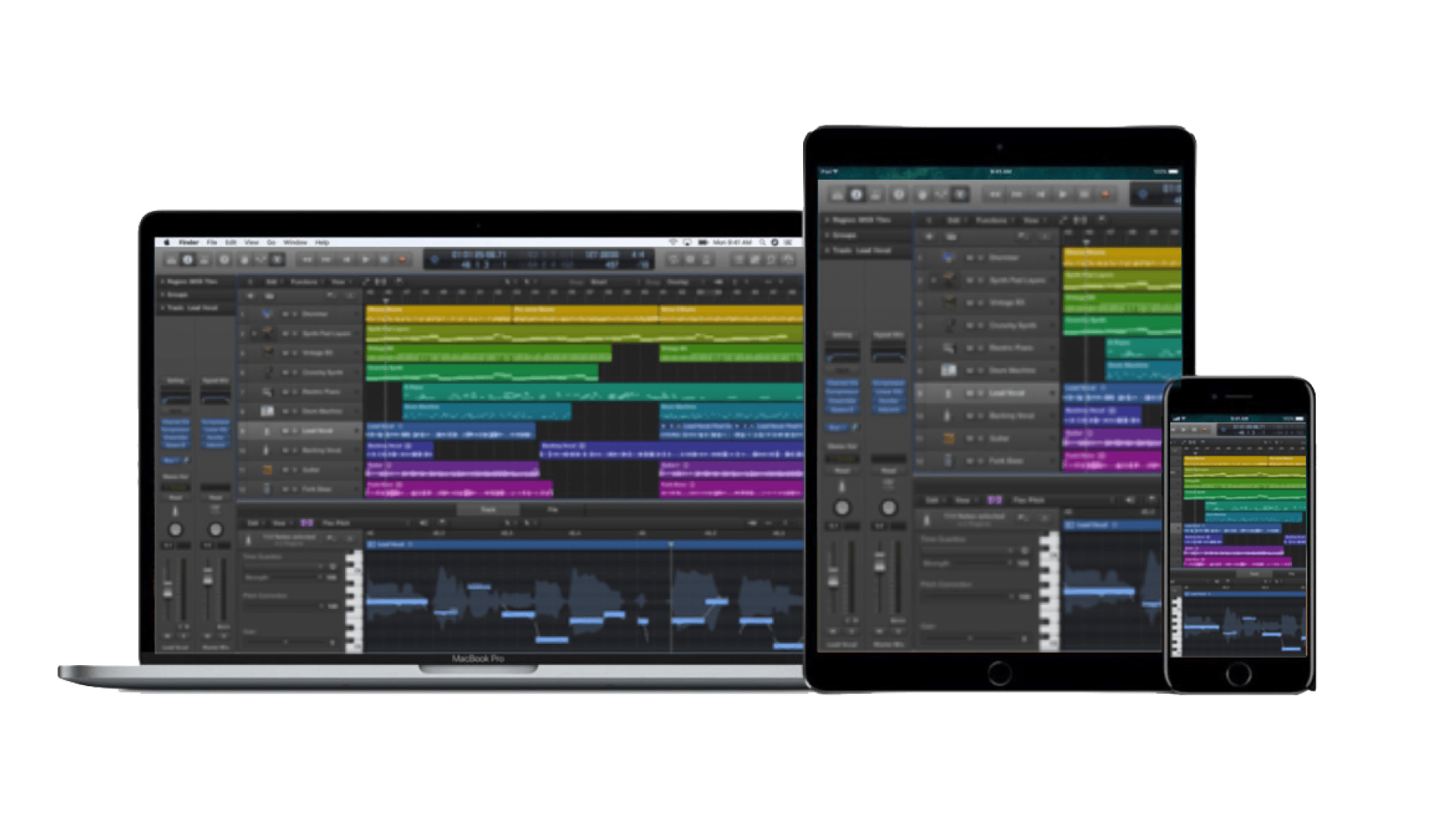
Quick overview of Logic Pro iOS
| Operating system: | iPad OS 17 |
| System requirements: | iPad with A12 bionic chip or newer |
| Key features: | Standalone platform, Apple Pencil, desktop interconnectivity |
| Included plugins: | Logic Pro’s suite of instruments, effects, EQ and more |
| Included content: | Logic Pro’s sound library of loops and samples |
| Price: | $69/yr, $6.99/mo |
Pros:
- Brings the power of Logic Pro to the portable convenience of an iPad
- Connects with recording interfaces like any other DAW
- Tactile experience gives the DAW an instrument feel
- Possible to use Apple Pencil for drawing automation lines
Cons:
- Subscription-based payment
- Better suited for use with larger iPad sizes
- Only available for Apple products
Why Logic Pro iOS is the best mobile DAW
We couldn’t round up the best DAWs without mentioning at least one mobile app-based DAW.
Out of all the apps we looked at, Apple’s Logic Pro iOS was the standout mobile DAW, with its free GarageBand iOS counterpart coming in for a close second place.
We loved Logic Pro iOS in particular for its strong connectivity with its desktop counterpart and optimization for the larger iPad tablet format.
It also makes essentially no compromises when compared to the desktop version of Logic Pro.
Why choose Logic Pro iOS?
This DAW is a powerful option for anyone who finds themselves writing and recording music on the go.
Logic Pro for iPad literally puts the DAW into your hands, turning it into an instrument of its own.
The best part is that everything you make in Logic Pro for iPad can easily be ported over to the desktop version of Logic Pro for mixing and post-production applications.
Another cool feature for instrumentalists is that you can take the DAW with you to your instrument, making it easier to adjust levels and comp over recordings.
While Logic Pro is only available for Apple users and the subscription model won’t let you own the app outright, it makes for a great companion tool that works in many standalone situations.
What’s new in Logic Pro for iPad
- Improved sample library navigation
- Better interactivity between Stage Manager and Split View apps
- Recorder mode in Quick Sampler plugin with the iPad’s internal mic
- The new Mastering Assistant plugin
How to choose the right DAW for you
With so many options out there, it’s easy to feel overwhelmed and unsure about which DAW is best for your needs.
The reality is that every DAW on this list can handle recording, writing, mixing and mastering tasks.
However, each DAW has advantages in specific areas. So here’s a few questions to ask yourself as you shop for a DAW:
What kind of studio do you produce in?
Your choice of DAW depends on the context in which you make music.
Home studio producers tend to look for something user-friendly that encourages creativity. A space to write ideas, record demos and produce rough mixes.
If you have a recording studio with multiple audio inputs, a variety of microphones and a dedicated recording room, you’ll need something that’s better optimized to handle the demands of a live studio.
If you have a combination of needs—like a creative desk at home and a small studio you record out of—you might need something that offers a middle ground between creative and audio engineering tools.
Ultimately, there’s a spectrum in DAW software that balances the need for creative workflows and engineer-oriented workflows.
What kind of music do you produce?
Different DAWs can be suited to different genres. Some offer a focus on electronic production while others offer more features for live recording.
For electronic producers, it’s usually important to have a loop-based approach to composition like Ableton Live’s session view, as well as plenty of sound design plugins and virtual synth instruments.
Hip-hop producers tend to appreciate solid MIDI editing, large sample libraries and a straightforward workflow.
Pop, rock and country producers (who tend to use more vocals and live instrumentation) need a DAW that can manage the demands of recording complex ensemble setups.
Orchestral producers look for DAWs that can handle film scoring, large orchestral plugins, sample libraries and MIDI expression control for orchestral VSTs. Being able to efficiently manage and record large ensembles is also essential.
Download a free DAW
Ultimately, one DAW’s workflow may work better for you than another’s.
So, your best bet when shopping for a new DAW is to try out as many as you can, since many manufacturers offer free trials or discounted limited versions.
There’s no bad DAW
Ultimately, the best DAW is the one that feels right for you.
Now that you know what each of the top DAWs in the industry offers, download some demos and try out the ones that appeal most to your style of music production!
Gear guides, tips, tutorials, inspiration and more—delivered weekly.
Keep up with the LANDR Blog.
